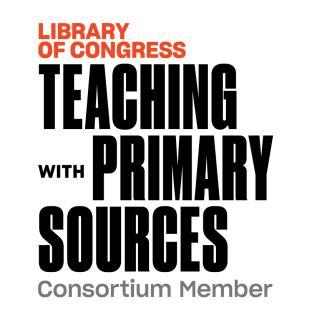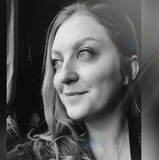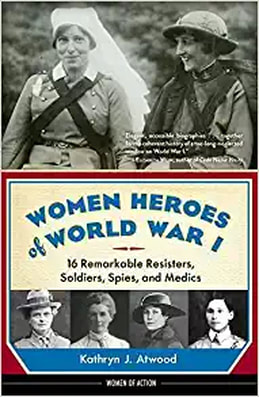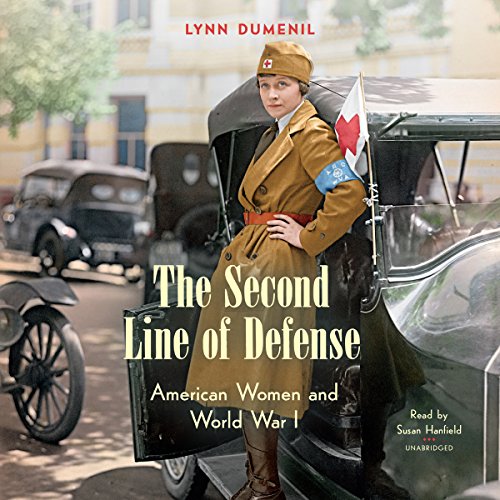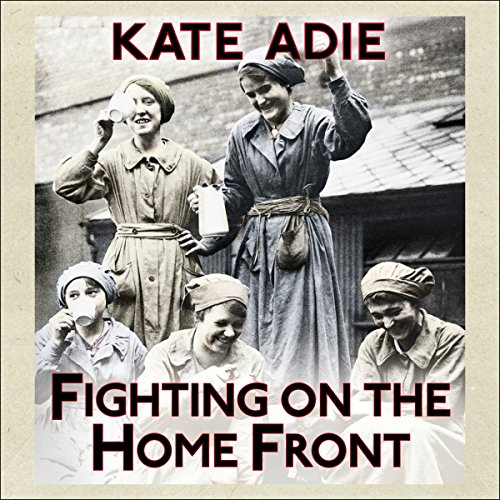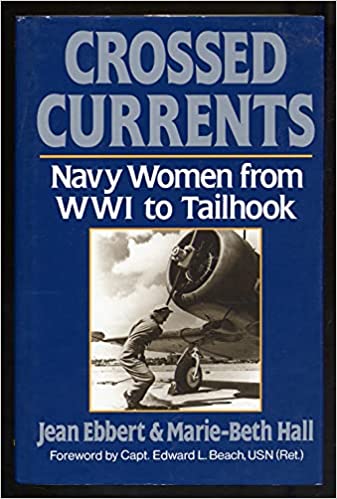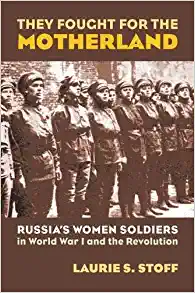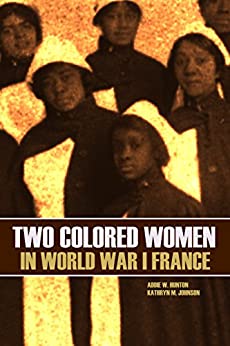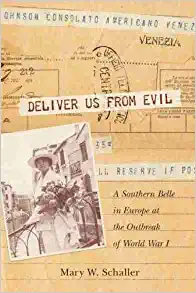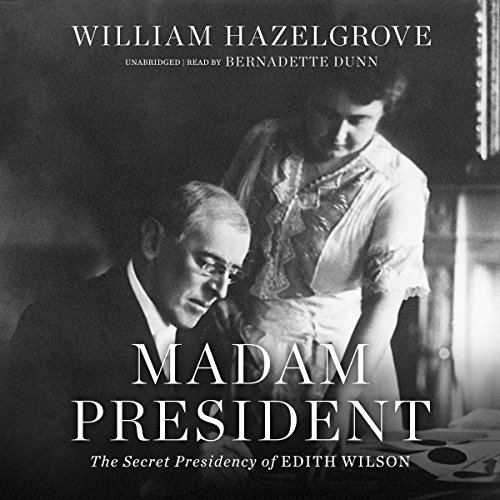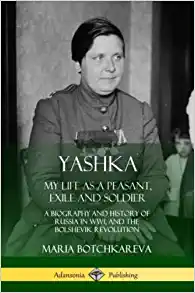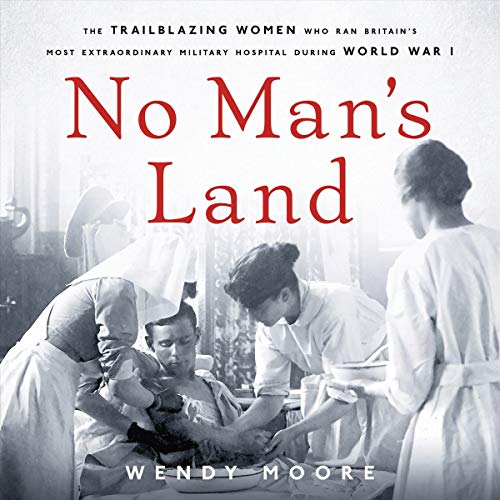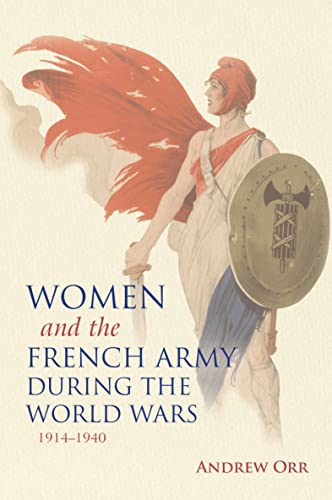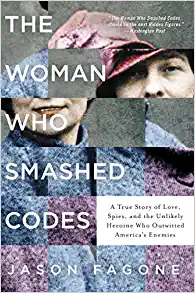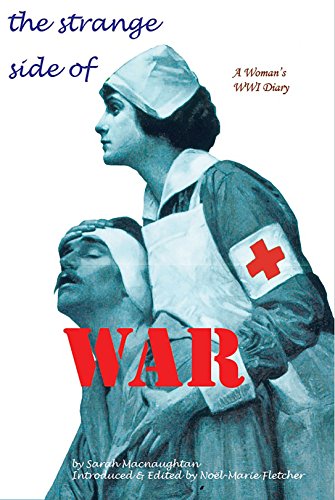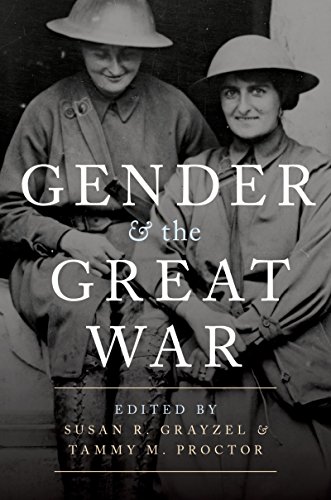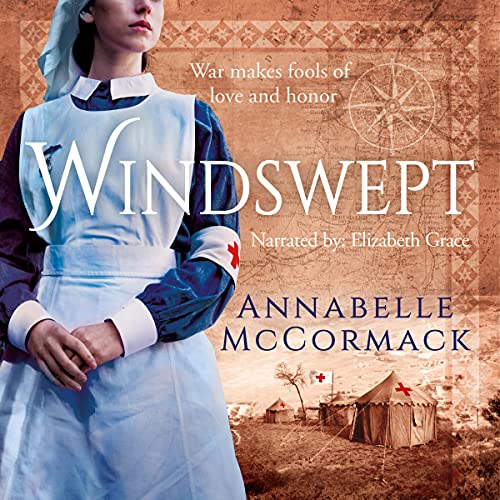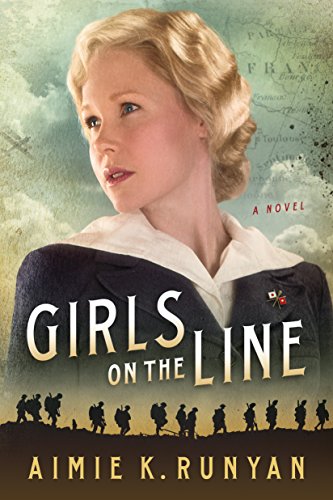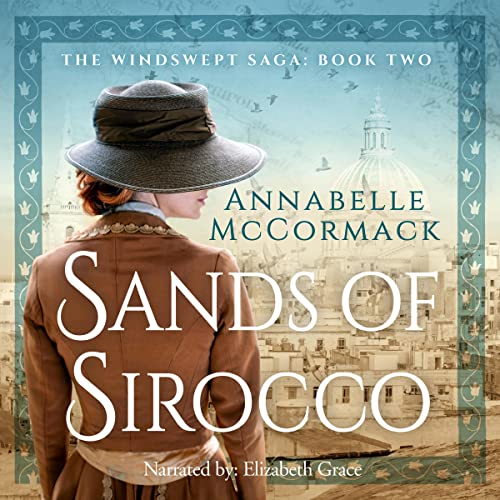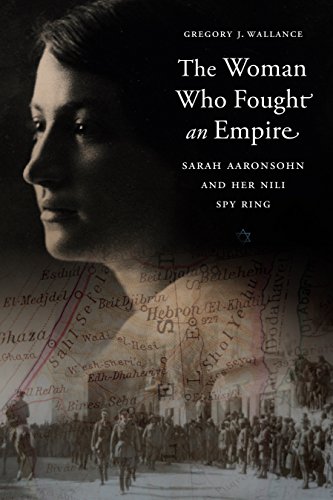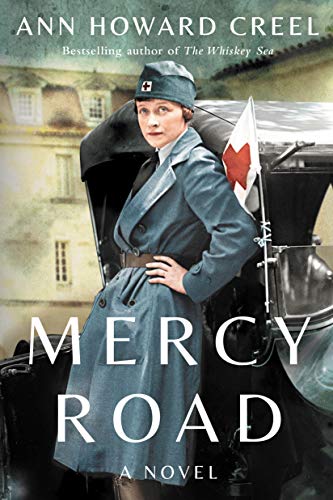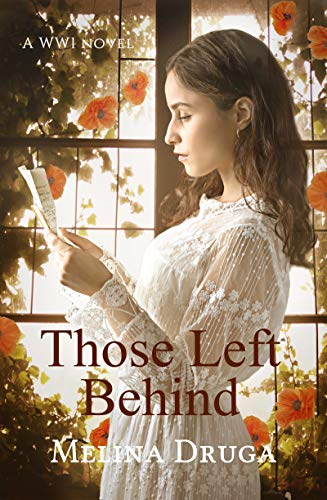26. 1900-1930 Women's Lives in Collision
|
Between 1900 and 1930, the world was at war. Between the Russo-Japanese War and World War I, every part of the world was affected. Women at home or on the front played a vital role in fighting for peace, sustaining the war effort, and rebuilding. For women in Russia, the wars resulted in a revolution that promised much and gave them little. In Turkey, the war brought reforms that forced modernization of women's lives at a surface level. World War I was a catalyst for profound changes for women, but these were slow to materialize.
|
At the turn of the century, imperial nations clashed in a series of conflicts. Starting with the lesser studied but first global war, the Russo-Japanese war from 1904-1905 and ending with two more global wars. World War I was meant to be the war to “end all wars,” but naturally, given the need to number it, such was not the case.
In all of these conflicts, women served their nations in official capacities never seen before. From Japan, to the US, to India, to Europe and Africa, women everywhere saw their roles transformed and reframed, while their rights and responsibilities evolved and never went fully back.
Russo-Japanese War
Before World War I, the first truly global conflict was the Russo-Japanese War, what some historians refer to as World War Zero. As European powers divided up Africa and looked for spheres of influence in China, emerging powers in Russia and Japan sought to engage in the political and economic games of the age, namely: Industrialization, Militarism, Imperialism, and Nationalism. Both nations used state driven industrialization, which drew women into the workforce, and used their new wealth to fund efforts to expand power and control over neighboring regions. Imperialism is catastrophic for the people and states that lie in the path of the militant power, it is even bloodier when two powers bump into one another.
Both Japan and Russia sought control over Manchuria, a region north of Korea to control ports and expand their economic opportunities. When peaceful options failed, this resulted in all out war.
This war is crucial because it is the first major indicator of what war between two industrialized and imperial powers looks like. The war was also supported by European powers: France backing Russia and Britain backing Japan. And for women, this war is important because the notion of a “home front” emerges in this war as both nations look to engage their women in the war effort.
The Russo-Japanese War began in 1904 when Japan launched a surprise attack on the Russian navy at Port Arthur. Russia, under the rule of Tsar Nicholas II, sought to expand its influence in the Korean and Liaodong peninsulas, while Japan was concerned about Russian aggression in the region. Initially, Japan offered a deal to cede control of Manchuria to Russia in exchange for influence over Korea, but Russia rejected the proposal. The Japanese navy, led by Admiral Togo Heihachiro, successfully damaged Russian naval vessels and gained the upper hand in battles at Port Arthur and Liaoyang. By the end of 1904, Japan had sunk every ship in Russia's Pacific fleet. The surrender of the Port Arthur garrison marked a significant victory for Japan. Russia later suffered heavy losses in the Battle of the Yellow Sea and had to mobilize its Baltic Fleet as reinforcements.
In this war, cultural definitions of masculinity, or what it meant to be a man, emerged. At the turn of the century, Japanese military conscription and compulsory education shaped modern military manhood. Japan's nation-building efforts formed an idealized “manly” image in military academies and on battlefields. Militarization favored a specific type of masculinity over femininity seen in military parades exercised around the world. The Japanese military intentionally adopted aspects of a Western diet to make its male soldiers stronger, more “masculine.” They promoted hygiene and physical fitness through military-style exercise for men. Women, who were not in the military and subject to this physical regimen were seen as the antithesis of strength. Homophobia in Japan, Russia, and the west was rampant. Men who were considered weakly, or non-conforming to standards of masculinity were considered “feminine” and undesirable. Physical examinations during conscription, or recruitment, played a role in shaping the reputation of men. Ideal masculinity was associated with mental and physical strength. The Japanese military's emphasis on masculinity was reflected in schools and textbooks, promoting the image of strong Japanese boys. However, there were contradictions in these representations, showcasing different facets of militarized masculinity.
As masculinity segregated itself from femininity, what it meant to be feminine was a bit unclear. Certainly it was tied to maternity, care, and tenderness. But the Russo-Japanese war also saw Japan’s first state sponsored military brothels emerge, what would later be termed the Comfort Women stations in World War Two, and Russian soldiers were accused of mass rapes in their marches through Manchuria. Japanese leaders believed that prostitutes were necessary to control male sexual desire, because, they believed, “real men” should need to have sex with submissive women regularly. The definition of masculinity in this time and these cultures was fixed and dominating rather than other qualities of manhood like protecting. The use of brothels and violently sexualizing enemy women began with the Russo-Japanese war and would peak in WWII with unimaginable sexual crimes against women.
The war with Russia was nothing short of a global spectacle with journalists from around the world flocking to see two industrialized powers engage in modern war. The war should have been a warning of the World War to follow, but it wasn’t. Postcards of the war traveled the world with depictions of the war’s progress. As in most wars, women’s bodies were used in these depictions to evoke feelings and stir people to support one side of the conflict over another. One cartoon showed Saint Russia naked and at the mercy of Japan.
The Russo-Japanese War concluded with the Treaty of Portsmouth, New Hampshire, mediated by President Theodore Roosevelt in 1905. Despite Japan's clear victory, the country faced financial losses and had limited bargaining power. The treaty resulted in Russia ceding Port Arthur to Japan while retaining the northern part of Sakhalin Island. Roosevelt's support of Tsar Nicholas in refusing indemnities led to a frustrated Japan and anti-American riots broke out in Tokyo. Russia agreed to withdraw from Manchuria and recognize Japanese control of Korea, which would be annexed by Japan just five years later. The war demoralized the Russian Empire, leading to the Russian Revolution (more on that later), and marked a shift in global power dynamics with an Asian nation defeating a European power for the first time. It also initiated warfare among major powers in the Pacific region.
The Russo-Japanese War ultimately foreshadowed future global conflicts, and was marked by extreme brutality. It is estimated that both sides suffered casualties exceeding 150,000, and tragically, around 20,000 Chinese civilians, mostly women, lost their lives. The deaths of many civilians can be attributed to the brutal actions of the Russian forces in Manchuria. Journalists who reported on the war described instances where Russian soldiers looted and set fire to numerous villages, as well as committed acts of rape and murder against the women residing there.
Tensions between global leaders around the world continued to grow and it seems the brutal lessons of the Russo-Japanese war were not minded.
Women’s Pacifism
A minority, but active group of women around the world were those involved in peace efforts during this period. From the mid-1800s onwards, there were early efforts to promote transnational women's peace work, but this wouldn’t really come to fruition until World War I. One notable early example was Julia Ward Howe, an American activist, who called for a Mother's Peace Day after the Franco-Prussian War of 1870-71. In 1873, this day was celebrated for the first time in various American cities, as well as in England, Switzerland, Italy, and France. There were also other early initiatives, although short-lived, such as the efforts of Marie Goegg from Switzerland in 1868, and the establishment of several women’s peace organizations in the late 1890s one by Eugénie Potonié-Pierre and Ellen Robinson and another in Paris by Gabrielle Wiesniewska.
In the years leading up to the war women flocked to Europe to promote peace between nations. Jeanne Mélin, a French pacifist and feminist, attended 30 peace conferences in France during the final months of 1913. She believed deeply that women were the life givers and as a result could prevent wars brought on by male violence. She advocated for using education to stamp out violent behaviors and developed a system of co-education of girls and boys centered on the idea of exchanging masculine and feminine strengths. Melin joined many pacifists across nations of her era who claimed capitalism was responsible for war, a position that incurred the wrath of capitalists and threatened their lives.
In June of 1914, Archduke Franz Ferdinand was assassinated in Sarajevo, Bosnia. Many point to the Assasination of the Austro-Hungarian heir to the throne and his wife, Sophie the Duchess of Hohenberg, as the catalyst for the war. But their murders were merely an excuse for the war that had been looming for decades owing to increasing militarization and to competition over resources needed to fuel the industrial nations. In the days, weeks, and months that followed men and women involved in pacifist efforts went to work. Initially women’s pacifism focused on condemning war itself as inhumane rather than analyzing the specific political circumstances leading to the war. Then, in July, Jean Jaurès, an outspoken labor leader and pacifist, was assassinated before giving a high profile address. Mélin was a supporter of Jaurès and was horrified at his death, but the rapidly changing landscape put her perspectives in a tailspin. She was frustrated that her fellow German pacifists refused to accept German culpability in the conflict and felt pacifism without consideration for socio-political circumstances may not be the best path. By August, her home in France was bombed by the Germans. For Mélin and other women pacifists, these early months of war served as a transition phase in their philosophical positions on war.
Peace activities faced censorship and severe restrictions in all warring nations. Neutral countries provided more opportunities for women pacifists to express their disapproval of the war. For instance, in New York, 1,200 women participated in a silent women's peace parade in August 1914. In the same year, Emmeline Pethick-Lawrence from Britain and Rosika Schwimmer from Hungary toured the United States, delivering lectures on peace.
The organization of anti-war efforts led to the establishment of the Woman's Peace Party in Washington D.C. in January 1915, with 3,000 women participating. Their program called for immediate mediation and a convention of neutral nations, advocating continuous mediation as a means to reach a negotiated peace. Women marched in all black and wrote letters in their home countries, hoping to keep their husbands, sons, and fathers safe. One of the most popular songs in America in 1915 was “I Didn’t Raise my Boy to be a Soldier.”
Discussions about an international women's meeting began in Europe when the IWSA canceled its scheduled congress in Berlin. Organized by Germany’s first female jurist, Anita Augspurg, and Dutch pacifist Aletta Jacobs, more than 1,000 female delegates came together at the Hague in 1915 to discuss not only the end of this war, but the prevention of wars in the future. These women had to brave political repercussions, hazardous travel, and the risk of entering already war-torn Europe to show their dedication to peace.
During the congress, participants advocated for political rights for women, democratic measures, international arbitration, democratic control of foreign policy, disarmament, free trade, and pacifist education. They viewed equity and democracy as essential prerequisites for a peaceful world order. The congress participants believed that women's suffrage was necessary for women to have political influence and played on societal norms of motherhood to support their radical political demands.
The congress also led to the establishment of the International Committee of Women for Permanent Peace (ICWPP). This committee worked to maintain international communication but faced increasing challenges due to travel restrictions, disrupted mail routes, and financial difficulties. National sections of the ICWPP focused on spreading peace propaganda and organizing relief work in their respective countries. Activities in the warring nations faced severe restrictions and opposition from nationalist groups and even other women's organizations. Neutral countries provided more opportunities for peace-related work.
Many feminist peace activists believed that their maternal instincts gave them insights that should be represented in government and therefore they were entitled to the right to vote. Pacifist women of course intended to use their vote to promote peace. During World War I, women from around the world faced backlash from their governments for demanding voting rights in a time of war. In France, women argued their vote would end the fighting.
Sadly, their voices were muffled by the ongoing call for supremacy through war from those who wanted no piece of their peace.
World War I
World War I is a haunting reminder of the dangers of war because just how many people were killed before male leaders called for a stop: 10 million combatants killed, an unfathomable about wounded and maimed, while perhaps double to triple those figures for the number of civilians who were killed in the crossfire, starvation, or disease spread by war. World War I ended the Ottoman and Austro-Hungarian empires and devastated others. It also led to the Great Depression, which also claimed human lives.
The effects of World War I force posterity to consider why nations went to war in the first place and how war impacted people and families around the globe? It’s hard not to look at the leaders in this war and utilize the modern term “toxic masculinity.” This refers to masculinity gone awry.
Causes of World War I
World War I was caused by the same things that caused the Russo-Japanese war. It was made worse by shifting alliances that caused more nations than necessary to get involved. What should have been an isolated conflict between Austria-Hungary and the nation behind the assassins, Serbia, turned to global war because of militarism, alliances, imperialism, and nationalism.
Serbia called on their ally, Russia, to back them in the war. Austria-Hungary called on their longtime friend and also enemy, the newly united Germany, to support them. Germany was eager to use this war as an excuse to expand into France, and France was obligated by treaty to join Russia in the war. The Ottomans wanted to challenge Russia for economic influence in the Black Sea and the Middle East. So many players and yet, poor political choices on behalf of Germany involved even more nations!
War on the western border with France was daunting, especially with Russia attacking from the east, so Germany hoped to quickly sack Paris and then turn to face Russia. To do this they decided to invade France through neutral Belgium: their ultimate downfall.
The beginning of the war in Belgium was terrible, just like in other places. The violation of Belgium's neutrality and the resulting assaults on human rights, such as massacres and rape by the invaders, led many women to support a defensive war. The hospitals were quickly overwhelmed from the brutality of war, and women in Belgium were called upon to help everywhere. Women from all walks of life, regardless of their medical skills, rushed to improvised aid stations set up in various places like schools, museums, monasteries, and castles. Nursing became the primary way for Belgian women to contribute to the war effort, as they were seen as having natural qualities useful for this role.
National Red Cross and private organizations like the Women's Emergency Corps sent nurses to work alongside the few registered Belgian nurses. Contrary to the romanticized image of nurturing angels, these nurses faced physically demanding, poorly compensated, and emotionally challenging work in hospitals and convalescent facilities. Women also joined auxiliary services in the army, performing tasks like laundry, cleaning, disinfection, cooking, and sewing. Sewing workshops were established to produce military clothing, and small factories employed women to make gas masks and camouflage netting. Women were responsible for the well-being of children left behind in the war-torn region and often had to evacuate them to France or Switzerland. Despite efforts to provide jobs, income insecurity grew, leading to clandestine prostitution near the trenches.
The devastating invasion of Belgium caused Britain, previously neutral, to join the war. This was complicated and interesting for several reasons. First, Kaiser Wilhelm of Germany and King George of Britain were first cousins, sharing Queen Victoria as their grandmother. Tsar Nicholas was also one of George’s first cousins on the other side who cemented his connections to the British royal family by marrying Queen Victoria’s favorite granddaughter, Princess Alix of Hesse, or Alexandra. These ambitious cousins were now engaged in the bloodiest war in world history. Russia, France, and Britain, longtime rivals even as recently as the Russo-Japanese war, were on the same side. Just one year before the war all three emperors were at a family event, the wedding of the Kaiser’s daughter, Princess Victoria Louise of Prussia.
Women’s War Support
While male world leaders poured more and more of their young men onto the battlefields of Europe, women everywhere were required to play a role as well. It was meant to be a supportive role in line with cultural views of femininity, but gradually morphed into more active roles as the war dragged on and devastating numbers of male lives were lost.
Male leaders were not the only ones who upheld idealized gender roles. Women aggressively supported conscription efforts through a form of “toxic femininity,” for lack of a better term, that bullied men into doing their male duty. This was most evident in Britain. The war demanded a shift in women's traditional roles, blurring the lines between their expected behaviors. Propaganda portrayed women as gentle, vulnerable homemakers who were both objects of affection and victims of enemy atrocities. At the same time, they were depicted as resilient and active participants in the war effort.
In 1914, the Order of the White Feather was created as a propaganda campaign to shame men into enlisting. The white feather symbol represented cowardice and neglect of duty. It was believed to have originated from cockfighting, where a white tail feather indicated a weak and passive bird. In August 1914, a group of women in Folkestone handed out white feathers to non-uniformed men to pressure them to join the fight. The movement spread across the country, gaining attention in the media. Some men faced harassment and coercion, even if they were contributing to the war effort in civilian roles. Prominent figures such as Mary Augusta Ward, Emma Orczy, and Emmeline Pankhurst supported the movement. The tactics employed by the women varied in effectiveness, sometimes targeting the wrong individuals, including injured veterans. In an effort to fix the situation, the government issued badges to acknowledge civilian contributions, but criticism continued. The campaign stirred controversy, but the women involved remained steadfast in their beliefs that real men should fight to protect their women and country.
Government issued propaganda posters served to reinforce these gender norms. Posters played a vital role in spreading messages. Women were often depicted as personifications of nations, embodying qualities like morality, virtue, innocence, and justice. The Imperial Maritime League appealed to British women to ensure their men enlisted, aligning with Kitchener's famous "Your country needs you!" poster, which targeted men. The home was portrayed as a place of security that needed protection from German aggression at any cost. Those who refused to join the war effort risked being rejected by their sweethearts and faced accusations and blame. Suffragettes used this evolving narrative to argue that women actively involved in the war deserved full citizenship more than male pacifists or conscientious objectors.
India
Although India was a British colony and was forced to join the war as part of the empire, Indian women’s enthusiasm was palpable. Royal women of the native states offered their support. Queen Taradevi in Calcutta said, “It is not I alone, I should say, but there are thousands and thousands of Indian ladies who are more anxious than myself, but there is no such emergency, neither will there be one for the ladies to go to the front when they are brave men who would suffice for fighting the enemies.”
Begum of Bhopal, a Muslim, spoke at the Delhi War Conference, stating, “The need of the Empire is undoubtedly India’s opportunity.” This despite the fact that Britain was at war with the Muslim Ottoman Empire. These women’s examples challenge the idea that women’s positions were inherently anti-colonial or pacifist.
Surprisingly, even the political bourgeoisie, including nationalist parties like the Indian National Congress, supported the war effort. Both moderate and extremist factions within the Congress hoped that India's contribution to the war would lead to the desired "Dominion" status within the British Empire. Notable figures like Annie Besant, Bal Gangadhar Tilak, Mahatma Gandhi, and Jawaharlal Nehru encouraged women to join the struggle for independence. Female social reformers like Swarnakumari Devi and her daughter Sarala Devi Chaudhurani played important roles in inspiring women to participate in the nation's cause. Ramabhai Ranade, a women's rights activist, gave a loyalist speech at the Bombay War Conference and received recognition for her support.
But for girls and women of the lower classes, the war touched closer to home as their fathers, husbands, and sons were fighting the war. The letter from one girl to her father on the front survives. She wrote, “Dear Father, … This is Kishan Devi. I am writing in to inform that I am alright over here. We received your letter...We were really scared after receiving your letter… My heart is yours. You are everything to me, and I worry about you. I am like a living dead without you... Reply to our letter soon.”
Devi was not alone, most women at home wrote letters to keep up morale of the men in the the trenches abroad. Emily Chitticks wrote to her fiancée Private William Martin. She said, “My Dearest Will… I shall be so relieved to get a letter from you. I can't help feeling a bit anxious dear… I know God can take care of you wherever you are and if it's his will darling he will so are you to come back to me, that's how I feel about it dear, if we only put our trust in Him. I am sure he will.” Soon after, she learned he was killed in action.
Letter writing was an important part of women’s roles during the war. Women all around the world, corresponded with their fathers and brothers, fiancés and husbands.
Women in the Labor Force
Some women believed that they could, collectively, improve their station through supporting the war. If women could prove that they too could take on the rigors of war, perhaps their nations would then better recognize their status, rights, and ideas. Namely, multiple Western nations were grappling with the issue of suffrage, and many women hoped their performance in the war could be the deciding factor.
With millions of men away from home around the world, women jumped into manufacturing and agricultural roles as a chance to provide for their families or improve their prospects. In Russia 15 million men were drafted to fight, causing a shortage of labor in jobs that were essential to sustain the war effort. There, and in many other places, the government relaxed restrictions on female and child labor, leading to a significant increase in the number of women working. Women took on jobs traditionally dominated by men, such as metalwork, machine manufacturing, and munitions production. They also filled in for men in various roles like streetcar conductors, truck drivers, and railway workers. Women entered fields like utilities, accountancy, telegraph operation, and secretarial work, and took on jobs as messengers, mechanics, chimney sweeps, mail carriers, police officers, janitors, and carters. Despite their important contributions, women were paid significantly less than men, earning as little as 35 percent of male wages. Some people criticized their involvement, perceiving women as a threat to male dominance.
The largest increase in female labor occurred in agriculture, where women made up around 72 percent of workers on peasant farms and 58 percent on landowner estates by 1916. However, male farmers saw the increased women in the profession as a sort of "feminization" of agricultural labor and met these women farmers with negativity. For them, women were a challenge to male control.
The way the war impacted the gendered labor force was a bit different for women living in the war zones like in Belgium, because they didn’t have enough warning or time to pull men from their jobs into armed service. Even with forced deportations of male workers starting in 1916, women did not systematically replace men as they did in neighboring countries. The majority of Belgian women mobilized to ensure nutritional survival. Many joined charities, while others engaged in civil resistance. Women in the unoccupied zone and those in exile were tasked with supporting the army, caring for the wounded, and assisting refugees.
Toward the end of the war, over 1.4 German women and 4.7 million British women joined the war effort. Americans boasted over 9 million women joining their formal labor force to meet war needs. Even the Ottoman Empire created the Islamic Organization for the Employment of Women to help make up for their shortage of manpower after the drafts, and by the end of the war women were shouldering much of the labor in the country, despite their similar lack of political representation.
Wartime Nursing
Women’s direct participation in the war can be seen best in the medical field. Most warring nations also had tens of thousands of volunteer nurses and doctors to try to serve their country and stem the tide of extreme loss. The numbers of those wounded in this war were entirely overwhelming, and their injuries equally horrific. Medical professionals could not have saved even half of those they did without these waves of female volunteers racing around to provide treatments, change bandages, feed, clean, and comfort the wounded soldiers in the hundreds of hospitals that surrounded the battlefields of Europe. An estimated 1,500 nurses lost their lives in the process as they contracted disease or fell victim to bombing and shelling when serving so close to the front lines. One American anesthetist, Sophie Gran, while serving in France wrote that she “had just given this poor boy anesthesia when a bomb hit. We were supposed to hit the floor, but he was out and didn’t know what was going on. I took a tray and put it over our heads.” Working in these hospitals they witnessed all the greatest horrors of the war, and in doing so, they saved countless lives.
Women were also active problem solvers. Marie Curie invented mobile X-ray cars nicknamed "little Curies," which led to more precise and critical healthcare for the most at-risk patients. Around 150 women were trained to be X-ray operators on the battlefront, including Curie herself.
Women in Uniform
Most women supported the war and many were willing to put their lives on the line. Women made their way into volunteer corps within their militaries, with hundreds of thousands of uniformed women serving their countries. Axis and Allied powers used female volunteers for non-combat tasks that would free more men up for the battlefield, though a fair number would be caught up in combat regardless. However, some others, like Serbia and especially Russia, used women as combat troops and sent them to the front.
The best known of the female Russian soldiers was Maria Bochkareva. She is credited as the first woman to lead a Russian military unit after petitioning the Tsar for the right to serve, and was the founder of the “Women's Battalion of Death.” This battalion was made up of around 2,000 “patriotic” women volunteers. The women did see frontline service, but their primary role was to emasculate and shame any men who had not yet joined the army. She faced all the criticism and ostracism we would expect of society at the time, but other female units would follow hers. They were expected to serve mostly for propaganda value.
Russian Revolution
For Russia, World War I was pure hell and resulted in the overthrow of the Tsar, Nicholas II and ultimately the murder of him, his wife, their four daughters and son and heir in the Russian Revolution. While the western front was locked in a stalemate between trenches, the eastern front between Germany and Russia was much more mobile and as a result civilian populations were more exposed to the war. Germany pushed deep into Russia. Russia, still reeling from the debts of the Russo-Japanese War was unable to fully finance the war effort, tough rations were imposed on civilians, and women at home struggled to feed their children. In some cases, as the German army approached Russian villages, women were told to defend their homes with whatever weapons they could find in their homes– not a good plan against German tanks.
Tsar Nicholas II was wildly unpopular in Russia and had been for a long time. The night of his coronation poor policing at a celebratory event resulted in hundreds of Russian peasants being trampled to death. In a public relations nightmare, he and his German-born wife Alexandra attended a royal event where they were seen dancing, a fact capitalized on by the Bolshevik revolutionaries already active in Russia. Alexandra for one was visibly disturbed, but their reputations were already set. In her tenure as consort, Alexandra was out of touch with the Russian people and expected them to love her simply because she was their ruler. She took a while to learn Russian and isolated herself at court. Then in subsequent years she gave birth to four daughters, making the stability of the government uneasy given the Russian requirement for a male son. Finally, as war with Japan broke out, she gave birth to a sickly Alexei Nikolaevich, a male heir.
During World War I, Nicholas played an active and direct role in defending Russia and Alexandra was left in charge of affairs on the home front. Alexandra’s German origins in a time when Russia was in the bloodiest conflict in history against history against Germany didn’t help her position. She was supported by her confidant Rasputin, a mystic who showed incredible skill in calming Alexei during his bleeding episodes. The general distrust of the monarchy, the failing war, and the weird antics of Rasputin led to an early sign of what was to come: the brutal murder of Alexandra’s aid, Rasputin in 1916 by the aristocracy who claimed he was misleading her.
Social Democracy in Russia attracted women from both working-class backgrounds and the intelligentsia. Many of them eventually became prominent figures within the Bolshevik party. But while the revolution had feminist origins, it did not have feminist ends.
The Russian movement for women's suffrage, like everywhere in the world, gained momentum during World War I. More radical groups flourished criticizing the elite "bourgeois" women's groups, which were mostly led by privileged women. They argued that these women could not comprehend the needs of working-class and peasant women, and they believed that the women's movement posed a threat to working-class unity. Nadezhda Krupskaia tirelessly advocated for women's rights and education, and she married the communist leader, Lenin, in 1898. Krupskaia held significant positions within the Bolshevik party until her death in 1939.
In 1914, Bolshevik women, including Konkordiia Samoilova, Nadezhda Krupskaia, and Inessa Armand, published Rabotnitsa (The Woman Worker). Leading up to the revolution, it was revived in 1917 and became crucial for sharing feminist perspectives during the revolution. The February Revolution of 1917, which began on International Women's Day in the middle of the war, is generally recognized as the starting point of the revolution. Thousands of women from various backgrounds took to the streets demanding food and better conditions for soldiers' families.
Again, in March 1917, Petrograd witnessed the largest women's demonstration in Russian history. Led by Poliksena Shishkina-Iavein, President of the League for Women's Equal Rights and Russia's first female gynecologist, along with the revolutionary Vera Figner, approximately 40,000 women participated in the march.
Finally, in July 1917, women over the age of 20 were granted the right to vote and hold public office. Their first opportunity to exercise this newly acquired right came during the elections for the Constituent Assembly in November 1917. In some areas, such as Yaroslavl, the female voter turnout exceeded that of men.
Leading up to the October Revolution working class women were active in anti-World War I protests. Ultimately however, the revolution just meant more war for Russia when it turned into a civil war with the Nobility defended by the White Army and the Bolshevik revolutionaries in the Red Army. The "Woman's Battalion of Death," was brought in to defend the Winter Palace where the royal family were held. While women also fought in the White Armies, their numbers were considerably smaller, and the Whites did not actively recruit women for combat roles. By contrast, an estimated 80,000 women served with the Red Forces. Rozaliia Samoilovna Zemliachka, known as "Bloody Rosa" by the British opposition, served as a senior military commissar. However, the majority of women in the Red Army served in support roles as doctors, nurses, telephonists, and clerks.
Almost a year into the war, the Romanov royal family had been captured and were under house arrest in Siberia. They hoped they would be exiled to Britain where they could live with their cousins. As the war raged and the White Army made advances, the Red soldiers guarding the royals worried they might be rescued. On July 17, 1918, at 2:00 a.m., Nicholas, his wife, their five children, and four servants were abruptly awakened and instructed to prepare for departure. Led by Nicholas, who carried his son, they were taken to a small room downstairs and told to pose for a picture. Then, eleven intoxicated men entered the room and executed the family by firing squad. The children didn’t die initially, so the soldiers finished the gruesome act using bayonets. The children were all adolescents: Olga was 22, Tatiana was 21, Maria was 19, Anastasia was 17, and Alexei, the heir, was 13.
To cover the crime and stop loyal royalists from honoring the dead, the bodies were later taken to an old mine site to conceal their identities. The executioners dismembered the corpses with axes, doused them with acid, and set them on fire. The remains were buried in two separate locations. It took over 70 years to locate and identify their bodies.
Ultimately the Red Army won and communism took root in Russia under the Soviet Union. The early years of Soviet rule brought significant changes to women's lives. Alexandra Kollontai, the People's Commissar for Social Welfare and the first woman in the Bolshevik Government, played a crucial role in improving women's rights. Kollontai had extensively written about the "woman question" before the Revolution and advocated for sexual liberation. The Family Code of 1918 granted women equal status to men, recognized illegitimate children's rights, secularized marriage, and allowed couples to choose either the husband's or wife's name after marriage. Divorce became more accessible, abortion was legalized in 1920, and communal facilities for childcare and domestic tasks were introduced to relieve women of household responsibilities.
In 1919, the Women's Bureau (Zhenotdel) was established. Initially led by Alexandra Kollontai, Inessa Armand, and Nadezhda Krupskaia, its purpose was to disseminate propaganda among working-class women and engage them in public life and the revolutionary process.
The Zhenotdel also aimed to promote literacy and education among women in Central Asia. As the proletariat was not substantial in Central Asia, the Soviets believed that Muslim women, as the most oppressed group within the region's patriarchal structure, could bring about social change. However, their attempts to target women in the region faced resistance, partly due to the history of Russian colonization, and contributed to growing anti-Soviet sentiment.
The reforms to improve women's lives were relatively short-lived. By the mid- to late-1920s, both public and party attitudes toward family policies became more conservative. In the 1930s, Stalin reversed many of the rights granted to women and families in the 1918 Family Code. Abortion was banned, divorce became extremely difficult to obtain, and the rights of illegitimate children were revoked.
Stalin also disbanded the Zhenotdel in 1930, claiming that women's emancipation had been achieved in the Soviet Union, and therefore, the department was no longer necessary. Throughout the entire history of the Soviet Union, women accounted for only 3-4% of the party's Central Committee on average.
The early communist vision of women's equality and liberation, where women would have equal access to any profession and communal institutions would take on the responsibilities of child-rearing and housekeeping and was never fully realized. As emphasis shifted back toward the traditional family unit in the 1930s, women were burdened with the double duty of domestic chores and demanding full-time work, often in physically demanding jobs.
Treaty of Versailles
In October of 1918, just over a year after US entry into World War I ending a stalemate on the western front, an armistice between the Ottoman Empire and the Allies ended fighting in the Middle East was signed. Just days afterward, the disintegrating Austro-Hungarian Empire signed an armistice with Italy. In the west, German defeat was eminent and the French, British, and Belgian leaders were not open to compromise. Peace would require Germany to submit to complete demilitarization, departure from France, Belgium and Alsace-Lorraine, and release of Allied prisoners of war. They were given just 72 hours to consider the terms. On November 10th, German Kaiser Wilhelm II abdicated, or stepped down from, the throne. The next day, November (11) the 11th at 11:00am, hostilities ceased. This day is now known as Armistice Day. Peace, it seemed, had finally come.
Unfortunately, British and French objectives in the resolution to the war were about punishment, not peace. The Treaty of Versailles was an aggressive treaty pursued to punish Germany. The US never signed it. The negotiations were challenging and Germany was excluded from the discussions. Germany's counter-proposals on the 29th were rejected. The Allies gave Germany five days to decide or face the resumption of war. Germany reluctantly accepted the terms. Not a single woman was in the room.
The conditions imposed were undeniably severe. Germany took responsibility for the war and lost 68,000 square kilometers of territory. Germany agreed to pay a massive sum of 20 billion gold marks in reparations to France. Its colonies in Africa were taken away, and its military power was severely limited. This humiliation fueled Germany's desire for revenge.
The International Committee of Women for Permanent Peace’s ultimate goal was to hold a congress during the official peace negotiations. The post-war congress took place in Zurich in May 1919, where about 150 women from sixteen countries discussed the new political order in Europe. They strongly opposed the Versailles Treaty, believing it would lead to renewed conflict. The ICWPP changed its name to the Women's International League for Peace and Freedom (WILPF) and relocated its central office to Geneva, near the League of Nations. Emily Greene Balch became the leader, and she later received the Nobel Peace Prize in 1946.
After reaching a peace agreement with Germany, the Allies shifted their focus to the remaining former Central Powers. The Austro-Hungarian Empire lost more than 60 percent of its former territory, which now belonged to independent nations like Czechoslovakia, Yugoslavia, and part of Poland.
The final treaty of the Paris Peace Conference was the Treaty of Sevres, signed in August 1920 between the Allies and the former Ottoman Empire. Although Sultan Mehmed VI accepted the treaty, it was rejected by Mustafa Kemal Ataturk, a Turkish nationalist leading a war for independence. Eventually, negotiations between Ataturk’s representatives and the Allies resulted in the 1923 Treaty of Lausanne, which recognized the establishment of the new nation of Turkey. This treaty proved to be the most enduring among all the Paris treaties.
In the years after the war, launched a number of reforms to truly emancipate and empower women in particular! Not unlike others in WWI, the women of Turkey filled men’s labor positions in mass during the war. In response, Ataturk made the advancement of women a primary goal in democratic Turkey. He passed laws regarding equal citizenship, marriage rights, divorce rights, rights of inheritance, and more. He rapidly westernized and modernized women’s roles. Women were given the right to vote and be elected officials, and they could serve in the fields of law and medicine. Turkey became the first country to have a female supreme court judge and first female fighter pilot. As Ataturk said, "Our most urgent present task is to catch up with the modern world […] We shall not catch up with the modern world if we only modernize half the population."
But feminists in Turkey found it to be all show while little changed in reality. Sabina Sertel wrote, “The chances of unhappiness for an unmarried woman are one hundred percent. I may agree with you, society will not. I may applaud you, but they will stone you. Do you think you can live single and free like a man? That’s a bigger fantasy than your romantic dreams. People at work will always see you as a woman and focus on your sexuality. The minute you walk down the street arm-in-arm with a man you like, the neighborhood kids will stone you, the door of every house will be closed to you, and everywhere you go, people will judge you. Any man you live with will see you as simply a plaything he has temporarily made his own. Eventually the police will hound you.”
One of the efforts made was to modernize women’s dress as well, but the path to women’s “liberation” removed women’s choice– so not very liberating in reality. Attaturk forced women to remove their headscarves which are a sign of modesty, called Hijabs. Many women found comfort in wearing the headscarf and wanted to continue wearing them. Despite understanding the importance of modernizing with women involved, Attaturk missed the whole point.
Conclusion
World War I disrupted gender norms around the world, destroyed empires, and touched millions of homes. Women living in Europe in the aftermath of the war, found it difficult to date or marry men their age, because there weren’t any. Graveyards filled Europe and the memory of war was everywhere. So many lives were lost in the war. Men who did return home we’re broken and traumatized. Women held families together, nursed wounded soldiers, supported veterans and civilians alike who dealt with post traumatic stress, and looked to honor the lives of those that were lost. But old grudges remained. And although no one wanted war, World War II was coming.
At the end of this era, so much remained in question. Could women go back to normal after years of upheaval? Would women’s wartime involvement lead to suffrage around the world? In what ways would World War II be different from World War I for women?
In all of these conflicts, women served their nations in official capacities never seen before. From Japan, to the US, to India, to Europe and Africa, women everywhere saw their roles transformed and reframed, while their rights and responsibilities evolved and never went fully back.
Russo-Japanese War
Before World War I, the first truly global conflict was the Russo-Japanese War, what some historians refer to as World War Zero. As European powers divided up Africa and looked for spheres of influence in China, emerging powers in Russia and Japan sought to engage in the political and economic games of the age, namely: Industrialization, Militarism, Imperialism, and Nationalism. Both nations used state driven industrialization, which drew women into the workforce, and used their new wealth to fund efforts to expand power and control over neighboring regions. Imperialism is catastrophic for the people and states that lie in the path of the militant power, it is even bloodier when two powers bump into one another.
Both Japan and Russia sought control over Manchuria, a region north of Korea to control ports and expand their economic opportunities. When peaceful options failed, this resulted in all out war.
This war is crucial because it is the first major indicator of what war between two industrialized and imperial powers looks like. The war was also supported by European powers: France backing Russia and Britain backing Japan. And for women, this war is important because the notion of a “home front” emerges in this war as both nations look to engage their women in the war effort.
The Russo-Japanese War began in 1904 when Japan launched a surprise attack on the Russian navy at Port Arthur. Russia, under the rule of Tsar Nicholas II, sought to expand its influence in the Korean and Liaodong peninsulas, while Japan was concerned about Russian aggression in the region. Initially, Japan offered a deal to cede control of Manchuria to Russia in exchange for influence over Korea, but Russia rejected the proposal. The Japanese navy, led by Admiral Togo Heihachiro, successfully damaged Russian naval vessels and gained the upper hand in battles at Port Arthur and Liaoyang. By the end of 1904, Japan had sunk every ship in Russia's Pacific fleet. The surrender of the Port Arthur garrison marked a significant victory for Japan. Russia later suffered heavy losses in the Battle of the Yellow Sea and had to mobilize its Baltic Fleet as reinforcements.
In this war, cultural definitions of masculinity, or what it meant to be a man, emerged. At the turn of the century, Japanese military conscription and compulsory education shaped modern military manhood. Japan's nation-building efforts formed an idealized “manly” image in military academies and on battlefields. Militarization favored a specific type of masculinity over femininity seen in military parades exercised around the world. The Japanese military intentionally adopted aspects of a Western diet to make its male soldiers stronger, more “masculine.” They promoted hygiene and physical fitness through military-style exercise for men. Women, who were not in the military and subject to this physical regimen were seen as the antithesis of strength. Homophobia in Japan, Russia, and the west was rampant. Men who were considered weakly, or non-conforming to standards of masculinity were considered “feminine” and undesirable. Physical examinations during conscription, or recruitment, played a role in shaping the reputation of men. Ideal masculinity was associated with mental and physical strength. The Japanese military's emphasis on masculinity was reflected in schools and textbooks, promoting the image of strong Japanese boys. However, there were contradictions in these representations, showcasing different facets of militarized masculinity.
As masculinity segregated itself from femininity, what it meant to be feminine was a bit unclear. Certainly it was tied to maternity, care, and tenderness. But the Russo-Japanese war also saw Japan’s first state sponsored military brothels emerge, what would later be termed the Comfort Women stations in World War Two, and Russian soldiers were accused of mass rapes in their marches through Manchuria. Japanese leaders believed that prostitutes were necessary to control male sexual desire, because, they believed, “real men” should need to have sex with submissive women regularly. The definition of masculinity in this time and these cultures was fixed and dominating rather than other qualities of manhood like protecting. The use of brothels and violently sexualizing enemy women began with the Russo-Japanese war and would peak in WWII with unimaginable sexual crimes against women.
The war with Russia was nothing short of a global spectacle with journalists from around the world flocking to see two industrialized powers engage in modern war. The war should have been a warning of the World War to follow, but it wasn’t. Postcards of the war traveled the world with depictions of the war’s progress. As in most wars, women’s bodies were used in these depictions to evoke feelings and stir people to support one side of the conflict over another. One cartoon showed Saint Russia naked and at the mercy of Japan.
The Russo-Japanese War concluded with the Treaty of Portsmouth, New Hampshire, mediated by President Theodore Roosevelt in 1905. Despite Japan's clear victory, the country faced financial losses and had limited bargaining power. The treaty resulted in Russia ceding Port Arthur to Japan while retaining the northern part of Sakhalin Island. Roosevelt's support of Tsar Nicholas in refusing indemnities led to a frustrated Japan and anti-American riots broke out in Tokyo. Russia agreed to withdraw from Manchuria and recognize Japanese control of Korea, which would be annexed by Japan just five years later. The war demoralized the Russian Empire, leading to the Russian Revolution (more on that later), and marked a shift in global power dynamics with an Asian nation defeating a European power for the first time. It also initiated warfare among major powers in the Pacific region.
The Russo-Japanese War ultimately foreshadowed future global conflicts, and was marked by extreme brutality. It is estimated that both sides suffered casualties exceeding 150,000, and tragically, around 20,000 Chinese civilians, mostly women, lost their lives. The deaths of many civilians can be attributed to the brutal actions of the Russian forces in Manchuria. Journalists who reported on the war described instances where Russian soldiers looted and set fire to numerous villages, as well as committed acts of rape and murder against the women residing there.
Tensions between global leaders around the world continued to grow and it seems the brutal lessons of the Russo-Japanese war were not minded.
Women’s Pacifism
A minority, but active group of women around the world were those involved in peace efforts during this period. From the mid-1800s onwards, there were early efforts to promote transnational women's peace work, but this wouldn’t really come to fruition until World War I. One notable early example was Julia Ward Howe, an American activist, who called for a Mother's Peace Day after the Franco-Prussian War of 1870-71. In 1873, this day was celebrated for the first time in various American cities, as well as in England, Switzerland, Italy, and France. There were also other early initiatives, although short-lived, such as the efforts of Marie Goegg from Switzerland in 1868, and the establishment of several women’s peace organizations in the late 1890s one by Eugénie Potonié-Pierre and Ellen Robinson and another in Paris by Gabrielle Wiesniewska.
In the years leading up to the war women flocked to Europe to promote peace between nations. Jeanne Mélin, a French pacifist and feminist, attended 30 peace conferences in France during the final months of 1913. She believed deeply that women were the life givers and as a result could prevent wars brought on by male violence. She advocated for using education to stamp out violent behaviors and developed a system of co-education of girls and boys centered on the idea of exchanging masculine and feminine strengths. Melin joined many pacifists across nations of her era who claimed capitalism was responsible for war, a position that incurred the wrath of capitalists and threatened their lives.
In June of 1914, Archduke Franz Ferdinand was assassinated in Sarajevo, Bosnia. Many point to the Assasination of the Austro-Hungarian heir to the throne and his wife, Sophie the Duchess of Hohenberg, as the catalyst for the war. But their murders were merely an excuse for the war that had been looming for decades owing to increasing militarization and to competition over resources needed to fuel the industrial nations. In the days, weeks, and months that followed men and women involved in pacifist efforts went to work. Initially women’s pacifism focused on condemning war itself as inhumane rather than analyzing the specific political circumstances leading to the war. Then, in July, Jean Jaurès, an outspoken labor leader and pacifist, was assassinated before giving a high profile address. Mélin was a supporter of Jaurès and was horrified at his death, but the rapidly changing landscape put her perspectives in a tailspin. She was frustrated that her fellow German pacifists refused to accept German culpability in the conflict and felt pacifism without consideration for socio-political circumstances may not be the best path. By August, her home in France was bombed by the Germans. For Mélin and other women pacifists, these early months of war served as a transition phase in their philosophical positions on war.
Peace activities faced censorship and severe restrictions in all warring nations. Neutral countries provided more opportunities for women pacifists to express their disapproval of the war. For instance, in New York, 1,200 women participated in a silent women's peace parade in August 1914. In the same year, Emmeline Pethick-Lawrence from Britain and Rosika Schwimmer from Hungary toured the United States, delivering lectures on peace.
The organization of anti-war efforts led to the establishment of the Woman's Peace Party in Washington D.C. in January 1915, with 3,000 women participating. Their program called for immediate mediation and a convention of neutral nations, advocating continuous mediation as a means to reach a negotiated peace. Women marched in all black and wrote letters in their home countries, hoping to keep their husbands, sons, and fathers safe. One of the most popular songs in America in 1915 was “I Didn’t Raise my Boy to be a Soldier.”
Discussions about an international women's meeting began in Europe when the IWSA canceled its scheduled congress in Berlin. Organized by Germany’s first female jurist, Anita Augspurg, and Dutch pacifist Aletta Jacobs, more than 1,000 female delegates came together at the Hague in 1915 to discuss not only the end of this war, but the prevention of wars in the future. These women had to brave political repercussions, hazardous travel, and the risk of entering already war-torn Europe to show their dedication to peace.
During the congress, participants advocated for political rights for women, democratic measures, international arbitration, democratic control of foreign policy, disarmament, free trade, and pacifist education. They viewed equity and democracy as essential prerequisites for a peaceful world order. The congress participants believed that women's suffrage was necessary for women to have political influence and played on societal norms of motherhood to support their radical political demands.
The congress also led to the establishment of the International Committee of Women for Permanent Peace (ICWPP). This committee worked to maintain international communication but faced increasing challenges due to travel restrictions, disrupted mail routes, and financial difficulties. National sections of the ICWPP focused on spreading peace propaganda and organizing relief work in their respective countries. Activities in the warring nations faced severe restrictions and opposition from nationalist groups and even other women's organizations. Neutral countries provided more opportunities for peace-related work.
Many feminist peace activists believed that their maternal instincts gave them insights that should be represented in government and therefore they were entitled to the right to vote. Pacifist women of course intended to use their vote to promote peace. During World War I, women from around the world faced backlash from their governments for demanding voting rights in a time of war. In France, women argued their vote would end the fighting.
Sadly, their voices were muffled by the ongoing call for supremacy through war from those who wanted no piece of their peace.
World War I
World War I is a haunting reminder of the dangers of war because just how many people were killed before male leaders called for a stop: 10 million combatants killed, an unfathomable about wounded and maimed, while perhaps double to triple those figures for the number of civilians who were killed in the crossfire, starvation, or disease spread by war. World War I ended the Ottoman and Austro-Hungarian empires and devastated others. It also led to the Great Depression, which also claimed human lives.
The effects of World War I force posterity to consider why nations went to war in the first place and how war impacted people and families around the globe? It’s hard not to look at the leaders in this war and utilize the modern term “toxic masculinity.” This refers to masculinity gone awry.
Causes of World War I
World War I was caused by the same things that caused the Russo-Japanese war. It was made worse by shifting alliances that caused more nations than necessary to get involved. What should have been an isolated conflict between Austria-Hungary and the nation behind the assassins, Serbia, turned to global war because of militarism, alliances, imperialism, and nationalism.
Serbia called on their ally, Russia, to back them in the war. Austria-Hungary called on their longtime friend and also enemy, the newly united Germany, to support them. Germany was eager to use this war as an excuse to expand into France, and France was obligated by treaty to join Russia in the war. The Ottomans wanted to challenge Russia for economic influence in the Black Sea and the Middle East. So many players and yet, poor political choices on behalf of Germany involved even more nations!
War on the western border with France was daunting, especially with Russia attacking from the east, so Germany hoped to quickly sack Paris and then turn to face Russia. To do this they decided to invade France through neutral Belgium: their ultimate downfall.
The beginning of the war in Belgium was terrible, just like in other places. The violation of Belgium's neutrality and the resulting assaults on human rights, such as massacres and rape by the invaders, led many women to support a defensive war. The hospitals were quickly overwhelmed from the brutality of war, and women in Belgium were called upon to help everywhere. Women from all walks of life, regardless of their medical skills, rushed to improvised aid stations set up in various places like schools, museums, monasteries, and castles. Nursing became the primary way for Belgian women to contribute to the war effort, as they were seen as having natural qualities useful for this role.
National Red Cross and private organizations like the Women's Emergency Corps sent nurses to work alongside the few registered Belgian nurses. Contrary to the romanticized image of nurturing angels, these nurses faced physically demanding, poorly compensated, and emotionally challenging work in hospitals and convalescent facilities. Women also joined auxiliary services in the army, performing tasks like laundry, cleaning, disinfection, cooking, and sewing. Sewing workshops were established to produce military clothing, and small factories employed women to make gas masks and camouflage netting. Women were responsible for the well-being of children left behind in the war-torn region and often had to evacuate them to France or Switzerland. Despite efforts to provide jobs, income insecurity grew, leading to clandestine prostitution near the trenches.
The devastating invasion of Belgium caused Britain, previously neutral, to join the war. This was complicated and interesting for several reasons. First, Kaiser Wilhelm of Germany and King George of Britain were first cousins, sharing Queen Victoria as their grandmother. Tsar Nicholas was also one of George’s first cousins on the other side who cemented his connections to the British royal family by marrying Queen Victoria’s favorite granddaughter, Princess Alix of Hesse, or Alexandra. These ambitious cousins were now engaged in the bloodiest war in world history. Russia, France, and Britain, longtime rivals even as recently as the Russo-Japanese war, were on the same side. Just one year before the war all three emperors were at a family event, the wedding of the Kaiser’s daughter, Princess Victoria Louise of Prussia.
Women’s War Support
While male world leaders poured more and more of their young men onto the battlefields of Europe, women everywhere were required to play a role as well. It was meant to be a supportive role in line with cultural views of femininity, but gradually morphed into more active roles as the war dragged on and devastating numbers of male lives were lost.
Male leaders were not the only ones who upheld idealized gender roles. Women aggressively supported conscription efforts through a form of “toxic femininity,” for lack of a better term, that bullied men into doing their male duty. This was most evident in Britain. The war demanded a shift in women's traditional roles, blurring the lines between their expected behaviors. Propaganda portrayed women as gentle, vulnerable homemakers who were both objects of affection and victims of enemy atrocities. At the same time, they were depicted as resilient and active participants in the war effort.
In 1914, the Order of the White Feather was created as a propaganda campaign to shame men into enlisting. The white feather symbol represented cowardice and neglect of duty. It was believed to have originated from cockfighting, where a white tail feather indicated a weak and passive bird. In August 1914, a group of women in Folkestone handed out white feathers to non-uniformed men to pressure them to join the fight. The movement spread across the country, gaining attention in the media. Some men faced harassment and coercion, even if they were contributing to the war effort in civilian roles. Prominent figures such as Mary Augusta Ward, Emma Orczy, and Emmeline Pankhurst supported the movement. The tactics employed by the women varied in effectiveness, sometimes targeting the wrong individuals, including injured veterans. In an effort to fix the situation, the government issued badges to acknowledge civilian contributions, but criticism continued. The campaign stirred controversy, but the women involved remained steadfast in their beliefs that real men should fight to protect their women and country.
Government issued propaganda posters served to reinforce these gender norms. Posters played a vital role in spreading messages. Women were often depicted as personifications of nations, embodying qualities like morality, virtue, innocence, and justice. The Imperial Maritime League appealed to British women to ensure their men enlisted, aligning with Kitchener's famous "Your country needs you!" poster, which targeted men. The home was portrayed as a place of security that needed protection from German aggression at any cost. Those who refused to join the war effort risked being rejected by their sweethearts and faced accusations and blame. Suffragettes used this evolving narrative to argue that women actively involved in the war deserved full citizenship more than male pacifists or conscientious objectors.
India
Although India was a British colony and was forced to join the war as part of the empire, Indian women’s enthusiasm was palpable. Royal women of the native states offered their support. Queen Taradevi in Calcutta said, “It is not I alone, I should say, but there are thousands and thousands of Indian ladies who are more anxious than myself, but there is no such emergency, neither will there be one for the ladies to go to the front when they are brave men who would suffice for fighting the enemies.”
Begum of Bhopal, a Muslim, spoke at the Delhi War Conference, stating, “The need of the Empire is undoubtedly India’s opportunity.” This despite the fact that Britain was at war with the Muslim Ottoman Empire. These women’s examples challenge the idea that women’s positions were inherently anti-colonial or pacifist.
Surprisingly, even the political bourgeoisie, including nationalist parties like the Indian National Congress, supported the war effort. Both moderate and extremist factions within the Congress hoped that India's contribution to the war would lead to the desired "Dominion" status within the British Empire. Notable figures like Annie Besant, Bal Gangadhar Tilak, Mahatma Gandhi, and Jawaharlal Nehru encouraged women to join the struggle for independence. Female social reformers like Swarnakumari Devi and her daughter Sarala Devi Chaudhurani played important roles in inspiring women to participate in the nation's cause. Ramabhai Ranade, a women's rights activist, gave a loyalist speech at the Bombay War Conference and received recognition for her support.
But for girls and women of the lower classes, the war touched closer to home as their fathers, husbands, and sons were fighting the war. The letter from one girl to her father on the front survives. She wrote, “Dear Father, … This is Kishan Devi. I am writing in to inform that I am alright over here. We received your letter...We were really scared after receiving your letter… My heart is yours. You are everything to me, and I worry about you. I am like a living dead without you... Reply to our letter soon.”
Devi was not alone, most women at home wrote letters to keep up morale of the men in the the trenches abroad. Emily Chitticks wrote to her fiancée Private William Martin. She said, “My Dearest Will… I shall be so relieved to get a letter from you. I can't help feeling a bit anxious dear… I know God can take care of you wherever you are and if it's his will darling he will so are you to come back to me, that's how I feel about it dear, if we only put our trust in Him. I am sure he will.” Soon after, she learned he was killed in action.
Letter writing was an important part of women’s roles during the war. Women all around the world, corresponded with their fathers and brothers, fiancés and husbands.
Women in the Labor Force
Some women believed that they could, collectively, improve their station through supporting the war. If women could prove that they too could take on the rigors of war, perhaps their nations would then better recognize their status, rights, and ideas. Namely, multiple Western nations were grappling with the issue of suffrage, and many women hoped their performance in the war could be the deciding factor.
With millions of men away from home around the world, women jumped into manufacturing and agricultural roles as a chance to provide for their families or improve their prospects. In Russia 15 million men were drafted to fight, causing a shortage of labor in jobs that were essential to sustain the war effort. There, and in many other places, the government relaxed restrictions on female and child labor, leading to a significant increase in the number of women working. Women took on jobs traditionally dominated by men, such as metalwork, machine manufacturing, and munitions production. They also filled in for men in various roles like streetcar conductors, truck drivers, and railway workers. Women entered fields like utilities, accountancy, telegraph operation, and secretarial work, and took on jobs as messengers, mechanics, chimney sweeps, mail carriers, police officers, janitors, and carters. Despite their important contributions, women were paid significantly less than men, earning as little as 35 percent of male wages. Some people criticized their involvement, perceiving women as a threat to male dominance.
The largest increase in female labor occurred in agriculture, where women made up around 72 percent of workers on peasant farms and 58 percent on landowner estates by 1916. However, male farmers saw the increased women in the profession as a sort of "feminization" of agricultural labor and met these women farmers with negativity. For them, women were a challenge to male control.
The way the war impacted the gendered labor force was a bit different for women living in the war zones like in Belgium, because they didn’t have enough warning or time to pull men from their jobs into armed service. Even with forced deportations of male workers starting in 1916, women did not systematically replace men as they did in neighboring countries. The majority of Belgian women mobilized to ensure nutritional survival. Many joined charities, while others engaged in civil resistance. Women in the unoccupied zone and those in exile were tasked with supporting the army, caring for the wounded, and assisting refugees.
Toward the end of the war, over 1.4 German women and 4.7 million British women joined the war effort. Americans boasted over 9 million women joining their formal labor force to meet war needs. Even the Ottoman Empire created the Islamic Organization for the Employment of Women to help make up for their shortage of manpower after the drafts, and by the end of the war women were shouldering much of the labor in the country, despite their similar lack of political representation.
Wartime Nursing
Women’s direct participation in the war can be seen best in the medical field. Most warring nations also had tens of thousands of volunteer nurses and doctors to try to serve their country and stem the tide of extreme loss. The numbers of those wounded in this war were entirely overwhelming, and their injuries equally horrific. Medical professionals could not have saved even half of those they did without these waves of female volunteers racing around to provide treatments, change bandages, feed, clean, and comfort the wounded soldiers in the hundreds of hospitals that surrounded the battlefields of Europe. An estimated 1,500 nurses lost their lives in the process as they contracted disease or fell victim to bombing and shelling when serving so close to the front lines. One American anesthetist, Sophie Gran, while serving in France wrote that she “had just given this poor boy anesthesia when a bomb hit. We were supposed to hit the floor, but he was out and didn’t know what was going on. I took a tray and put it over our heads.” Working in these hospitals they witnessed all the greatest horrors of the war, and in doing so, they saved countless lives.
Women were also active problem solvers. Marie Curie invented mobile X-ray cars nicknamed "little Curies," which led to more precise and critical healthcare for the most at-risk patients. Around 150 women were trained to be X-ray operators on the battlefront, including Curie herself.
Women in Uniform
Most women supported the war and many were willing to put their lives on the line. Women made their way into volunteer corps within their militaries, with hundreds of thousands of uniformed women serving their countries. Axis and Allied powers used female volunteers for non-combat tasks that would free more men up for the battlefield, though a fair number would be caught up in combat regardless. However, some others, like Serbia and especially Russia, used women as combat troops and sent them to the front.
The best known of the female Russian soldiers was Maria Bochkareva. She is credited as the first woman to lead a Russian military unit after petitioning the Tsar for the right to serve, and was the founder of the “Women's Battalion of Death.” This battalion was made up of around 2,000 “patriotic” women volunteers. The women did see frontline service, but their primary role was to emasculate and shame any men who had not yet joined the army. She faced all the criticism and ostracism we would expect of society at the time, but other female units would follow hers. They were expected to serve mostly for propaganda value.
Russian Revolution
For Russia, World War I was pure hell and resulted in the overthrow of the Tsar, Nicholas II and ultimately the murder of him, his wife, their four daughters and son and heir in the Russian Revolution. While the western front was locked in a stalemate between trenches, the eastern front between Germany and Russia was much more mobile and as a result civilian populations were more exposed to the war. Germany pushed deep into Russia. Russia, still reeling from the debts of the Russo-Japanese War was unable to fully finance the war effort, tough rations were imposed on civilians, and women at home struggled to feed their children. In some cases, as the German army approached Russian villages, women were told to defend their homes with whatever weapons they could find in their homes– not a good plan against German tanks.
Tsar Nicholas II was wildly unpopular in Russia and had been for a long time. The night of his coronation poor policing at a celebratory event resulted in hundreds of Russian peasants being trampled to death. In a public relations nightmare, he and his German-born wife Alexandra attended a royal event where they were seen dancing, a fact capitalized on by the Bolshevik revolutionaries already active in Russia. Alexandra for one was visibly disturbed, but their reputations were already set. In her tenure as consort, Alexandra was out of touch with the Russian people and expected them to love her simply because she was their ruler. She took a while to learn Russian and isolated herself at court. Then in subsequent years she gave birth to four daughters, making the stability of the government uneasy given the Russian requirement for a male son. Finally, as war with Japan broke out, she gave birth to a sickly Alexei Nikolaevich, a male heir.
During World War I, Nicholas played an active and direct role in defending Russia and Alexandra was left in charge of affairs on the home front. Alexandra’s German origins in a time when Russia was in the bloodiest conflict in history against history against Germany didn’t help her position. She was supported by her confidant Rasputin, a mystic who showed incredible skill in calming Alexei during his bleeding episodes. The general distrust of the monarchy, the failing war, and the weird antics of Rasputin led to an early sign of what was to come: the brutal murder of Alexandra’s aid, Rasputin in 1916 by the aristocracy who claimed he was misleading her.
Social Democracy in Russia attracted women from both working-class backgrounds and the intelligentsia. Many of them eventually became prominent figures within the Bolshevik party. But while the revolution had feminist origins, it did not have feminist ends.
The Russian movement for women's suffrage, like everywhere in the world, gained momentum during World War I. More radical groups flourished criticizing the elite "bourgeois" women's groups, which were mostly led by privileged women. They argued that these women could not comprehend the needs of working-class and peasant women, and they believed that the women's movement posed a threat to working-class unity. Nadezhda Krupskaia tirelessly advocated for women's rights and education, and she married the communist leader, Lenin, in 1898. Krupskaia held significant positions within the Bolshevik party until her death in 1939.
In 1914, Bolshevik women, including Konkordiia Samoilova, Nadezhda Krupskaia, and Inessa Armand, published Rabotnitsa (The Woman Worker). Leading up to the revolution, it was revived in 1917 and became crucial for sharing feminist perspectives during the revolution. The February Revolution of 1917, which began on International Women's Day in the middle of the war, is generally recognized as the starting point of the revolution. Thousands of women from various backgrounds took to the streets demanding food and better conditions for soldiers' families.
Again, in March 1917, Petrograd witnessed the largest women's demonstration in Russian history. Led by Poliksena Shishkina-Iavein, President of the League for Women's Equal Rights and Russia's first female gynecologist, along with the revolutionary Vera Figner, approximately 40,000 women participated in the march.
Finally, in July 1917, women over the age of 20 were granted the right to vote and hold public office. Their first opportunity to exercise this newly acquired right came during the elections for the Constituent Assembly in November 1917. In some areas, such as Yaroslavl, the female voter turnout exceeded that of men.
Leading up to the October Revolution working class women were active in anti-World War I protests. Ultimately however, the revolution just meant more war for Russia when it turned into a civil war with the Nobility defended by the White Army and the Bolshevik revolutionaries in the Red Army. The "Woman's Battalion of Death," was brought in to defend the Winter Palace where the royal family were held. While women also fought in the White Armies, their numbers were considerably smaller, and the Whites did not actively recruit women for combat roles. By contrast, an estimated 80,000 women served with the Red Forces. Rozaliia Samoilovna Zemliachka, known as "Bloody Rosa" by the British opposition, served as a senior military commissar. However, the majority of women in the Red Army served in support roles as doctors, nurses, telephonists, and clerks.
Almost a year into the war, the Romanov royal family had been captured and were under house arrest in Siberia. They hoped they would be exiled to Britain where they could live with their cousins. As the war raged and the White Army made advances, the Red soldiers guarding the royals worried they might be rescued. On July 17, 1918, at 2:00 a.m., Nicholas, his wife, their five children, and four servants were abruptly awakened and instructed to prepare for departure. Led by Nicholas, who carried his son, they were taken to a small room downstairs and told to pose for a picture. Then, eleven intoxicated men entered the room and executed the family by firing squad. The children didn’t die initially, so the soldiers finished the gruesome act using bayonets. The children were all adolescents: Olga was 22, Tatiana was 21, Maria was 19, Anastasia was 17, and Alexei, the heir, was 13.
To cover the crime and stop loyal royalists from honoring the dead, the bodies were later taken to an old mine site to conceal their identities. The executioners dismembered the corpses with axes, doused them with acid, and set them on fire. The remains were buried in two separate locations. It took over 70 years to locate and identify their bodies.
Ultimately the Red Army won and communism took root in Russia under the Soviet Union. The early years of Soviet rule brought significant changes to women's lives. Alexandra Kollontai, the People's Commissar for Social Welfare and the first woman in the Bolshevik Government, played a crucial role in improving women's rights. Kollontai had extensively written about the "woman question" before the Revolution and advocated for sexual liberation. The Family Code of 1918 granted women equal status to men, recognized illegitimate children's rights, secularized marriage, and allowed couples to choose either the husband's or wife's name after marriage. Divorce became more accessible, abortion was legalized in 1920, and communal facilities for childcare and domestic tasks were introduced to relieve women of household responsibilities.
In 1919, the Women's Bureau (Zhenotdel) was established. Initially led by Alexandra Kollontai, Inessa Armand, and Nadezhda Krupskaia, its purpose was to disseminate propaganda among working-class women and engage them in public life and the revolutionary process.
The Zhenotdel also aimed to promote literacy and education among women in Central Asia. As the proletariat was not substantial in Central Asia, the Soviets believed that Muslim women, as the most oppressed group within the region's patriarchal structure, could bring about social change. However, their attempts to target women in the region faced resistance, partly due to the history of Russian colonization, and contributed to growing anti-Soviet sentiment.
The reforms to improve women's lives were relatively short-lived. By the mid- to late-1920s, both public and party attitudes toward family policies became more conservative. In the 1930s, Stalin reversed many of the rights granted to women and families in the 1918 Family Code. Abortion was banned, divorce became extremely difficult to obtain, and the rights of illegitimate children were revoked.
Stalin also disbanded the Zhenotdel in 1930, claiming that women's emancipation had been achieved in the Soviet Union, and therefore, the department was no longer necessary. Throughout the entire history of the Soviet Union, women accounted for only 3-4% of the party's Central Committee on average.
The early communist vision of women's equality and liberation, where women would have equal access to any profession and communal institutions would take on the responsibilities of child-rearing and housekeeping and was never fully realized. As emphasis shifted back toward the traditional family unit in the 1930s, women were burdened with the double duty of domestic chores and demanding full-time work, often in physically demanding jobs.
Treaty of Versailles
In October of 1918, just over a year after US entry into World War I ending a stalemate on the western front, an armistice between the Ottoman Empire and the Allies ended fighting in the Middle East was signed. Just days afterward, the disintegrating Austro-Hungarian Empire signed an armistice with Italy. In the west, German defeat was eminent and the French, British, and Belgian leaders were not open to compromise. Peace would require Germany to submit to complete demilitarization, departure from France, Belgium and Alsace-Lorraine, and release of Allied prisoners of war. They were given just 72 hours to consider the terms. On November 10th, German Kaiser Wilhelm II abdicated, or stepped down from, the throne. The next day, November (11) the 11th at 11:00am, hostilities ceased. This day is now known as Armistice Day. Peace, it seemed, had finally come.
Unfortunately, British and French objectives in the resolution to the war were about punishment, not peace. The Treaty of Versailles was an aggressive treaty pursued to punish Germany. The US never signed it. The negotiations were challenging and Germany was excluded from the discussions. Germany's counter-proposals on the 29th were rejected. The Allies gave Germany five days to decide or face the resumption of war. Germany reluctantly accepted the terms. Not a single woman was in the room.
The conditions imposed were undeniably severe. Germany took responsibility for the war and lost 68,000 square kilometers of territory. Germany agreed to pay a massive sum of 20 billion gold marks in reparations to France. Its colonies in Africa were taken away, and its military power was severely limited. This humiliation fueled Germany's desire for revenge.
The International Committee of Women for Permanent Peace’s ultimate goal was to hold a congress during the official peace negotiations. The post-war congress took place in Zurich in May 1919, where about 150 women from sixteen countries discussed the new political order in Europe. They strongly opposed the Versailles Treaty, believing it would lead to renewed conflict. The ICWPP changed its name to the Women's International League for Peace and Freedom (WILPF) and relocated its central office to Geneva, near the League of Nations. Emily Greene Balch became the leader, and she later received the Nobel Peace Prize in 1946.
After reaching a peace agreement with Germany, the Allies shifted their focus to the remaining former Central Powers. The Austro-Hungarian Empire lost more than 60 percent of its former territory, which now belonged to independent nations like Czechoslovakia, Yugoslavia, and part of Poland.
The final treaty of the Paris Peace Conference was the Treaty of Sevres, signed in August 1920 between the Allies and the former Ottoman Empire. Although Sultan Mehmed VI accepted the treaty, it was rejected by Mustafa Kemal Ataturk, a Turkish nationalist leading a war for independence. Eventually, negotiations between Ataturk’s representatives and the Allies resulted in the 1923 Treaty of Lausanne, which recognized the establishment of the new nation of Turkey. This treaty proved to be the most enduring among all the Paris treaties.
In the years after the war, launched a number of reforms to truly emancipate and empower women in particular! Not unlike others in WWI, the women of Turkey filled men’s labor positions in mass during the war. In response, Ataturk made the advancement of women a primary goal in democratic Turkey. He passed laws regarding equal citizenship, marriage rights, divorce rights, rights of inheritance, and more. He rapidly westernized and modernized women’s roles. Women were given the right to vote and be elected officials, and they could serve in the fields of law and medicine. Turkey became the first country to have a female supreme court judge and first female fighter pilot. As Ataturk said, "Our most urgent present task is to catch up with the modern world […] We shall not catch up with the modern world if we only modernize half the population."
But feminists in Turkey found it to be all show while little changed in reality. Sabina Sertel wrote, “The chances of unhappiness for an unmarried woman are one hundred percent. I may agree with you, society will not. I may applaud you, but they will stone you. Do you think you can live single and free like a man? That’s a bigger fantasy than your romantic dreams. People at work will always see you as a woman and focus on your sexuality. The minute you walk down the street arm-in-arm with a man you like, the neighborhood kids will stone you, the door of every house will be closed to you, and everywhere you go, people will judge you. Any man you live with will see you as simply a plaything he has temporarily made his own. Eventually the police will hound you.”
One of the efforts made was to modernize women’s dress as well, but the path to women’s “liberation” removed women’s choice– so not very liberating in reality. Attaturk forced women to remove their headscarves which are a sign of modesty, called Hijabs. Many women found comfort in wearing the headscarf and wanted to continue wearing them. Despite understanding the importance of modernizing with women involved, Attaturk missed the whole point.
Conclusion
World War I disrupted gender norms around the world, destroyed empires, and touched millions of homes. Women living in Europe in the aftermath of the war, found it difficult to date or marry men their age, because there weren’t any. Graveyards filled Europe and the memory of war was everywhere. So many lives were lost in the war. Men who did return home we’re broken and traumatized. Women held families together, nursed wounded soldiers, supported veterans and civilians alike who dealt with post traumatic stress, and looked to honor the lives of those that were lost. But old grudges remained. And although no one wanted war, World War II was coming.
At the end of this era, so much remained in question. Could women go back to normal after years of upheaval? Would women’s wartime involvement lead to suffrage around the world? In what ways would World War II be different from World War I for women?
Draw your own conclusions
|
Learn how to teach with inquiry.
Many of these lesson plans were sponsored in part by the Library of Congress Teaching with Primary Sources Eastern Region Program, coordinated by Waynesburg University, the History and Social Studies Education Faculty at Plymouth State University, and the Patrons of the Remedial Herstory Project. |
Lesson Plans from Other Organizations
- This website, Women in World History has primary source based lesson plans on women's history in a whole range of topics. Some are free while others have a cost.
- The Roy Rosenzweig Center for History and New Media has produced recommendations for teaching women's history with primary sources and provided a collection of sources for world history. Check them out!
- The Stanford History Education Group has a number of lesson plans about women in World History.
Nina Macdonald: Sing A Song Of Wartime
Sing a song of War-Time,
Soldiers marching by,
Crowds of people standing,
Waving them 'Good-bye'.
When the crowds are over,
Home we go to tea,
Bread and margarine to eat,
War economy!
... Mummie does the house-work,
Can't get any maid,
Gone to make munitions,
'Cause they're better paid,
Nurse is always busy,
Never time to play,
Sewing shirts for soldiers,
Nearly ev'ry day.
Ev'ry body's doing Something for the War,
Girls are doing things They've never done before,
Go as 'bus conductors,
Drive a car or van,
All the world is topsy-turvy
Since the War began.
Nina MacDonald, “Sing a Song of War-Time,” https://allpoetry.com/poem/8620641-Sing-ASong-of-War-Time-by-Nina-Macdonald.
Questions:
Soldiers marching by,
Crowds of people standing,
Waving them 'Good-bye'.
When the crowds are over,
Home we go to tea,
Bread and margarine to eat,
War economy!
... Mummie does the house-work,
Can't get any maid,
Gone to make munitions,
'Cause they're better paid,
Nurse is always busy,
Never time to play,
Sewing shirts for soldiers,
Nearly ev'ry day.
Ev'ry body's doing Something for the War,
Girls are doing things They've never done before,
Go as 'bus conductors,
Drive a car or van,
All the world is topsy-turvy
Since the War began.
Nina MacDonald, “Sing a Song of War-Time,” https://allpoetry.com/poem/8620641-Sing-ASong-of-War-Time-by-Nina-Macdonald.
Questions:
- What were some of the things women were doing to support World War I?
- According to this poem, why were women supporting the WWI effort?
Frances Perkins: Speech
Frances Perkins was the first woman ever appointed to the President’s cabinet in US history. She was appointed Secretary of Labor, which was especially shocking considering the employment crisis that came along with the Great Depression. Perkins was one of the main reasons that the Social Security Administration was sustained through economic hardship and below is a speech regarding its success.
I must say I feel very much at home even though I just arrived. I feel at home because the Social Security Administration has, ever since it was established, been a sort of special concern of mine, although by the chicanery of politics it was not placed in the Department of Labor. I, of course, thought it should be.
As a matter of fact, one of the reasons I feel so deeply involved with the Social Security Administration is that even though it was not in the Department of Labor when it was first established, the Department of Labor had to carry it the way you carry a dependent child. It didn't have any money. That was so unfortunate. And we didn't have very much either. but we did, however, was to provide the Social Security Administration with offices in the Department of Labor Building. I even gave to the Chairman of the Social Security Board (as it was called in those days) the large, handsome, red-upholstered, high-back chair out of my own office so that he could look like a king. I didn't have to keep on looking like a queen. I found the chair somewhat uncomfortable so I made the sacrifice.
The whole Department did the same kind of thing. We gave them our best statisticians. We gave them the best of everything including Arthur Altmeyer, who was the Assistant Secretary of Labor and my real right hand, and without whom I felt very lost. It showed that we put our best people in there on loan, and we carried it for the first year and made it look like a going concern. In fact, it became a going concern in an extraordinarily short time.
When I asked what I was to speak about today, the suggestion was made I talk about the roots, or beginnings, of the Social Security Act. So I have thought about the roots. I suppose the roots--the idea that we ought to have a systematic method of taking care of the material needs of the aged--really springs from that deep well of charitableness which resides in the American people, and the efforts and the struggles of charity workers and social workers to handle the problems of people who were growing old and had no adequate means of support. Out of this impulse to be kind to the poor sprang, I suppose, a mulling of ideas about social insurance for the aged. But those people who were doing it didn't know that it was social insurance. They just kept thinking that something definite, something that people could look forward to, would be a great asset and a great assistance to them in their work. De Tocqueville, in his memoirs of his visit to America, mentioned what he thought was a unique state of mind of the American people: That they were so honestly concerned about their poor and did so much for them personally. It was not an organization; it was not a national action; it was not a State action; it was not Government. It was a personal action that De Tocqueville mentioned as being characteristic of the American people. They were so generous, so kind, so charitably disposed.
Well, I don't know anything about the times in which De Tocqueville visited America. That was long ago, and I know little about the psychological state of mind of the people of this country at that time. But I do know that at the time I came into the field of social work, these feelings were real. It was surprising what we were able to do through volunteer work--by the volunteer support of organizations who help the poor; and particularly the aged poor. Just look over the country At the old ladies' homes and the old couples' homes and the old members' homes that sprang up because aged people had necessities that had to be met. In each case, somebody got money together and established these homes. And life went on for the aged, after a fashion, as recipients of a kind of charity. These things have been going on for years.
Perkins, Frances. Speech. The Roots of Social Security. October 1963. https://www.ssa.gov/history/perkins5.html.
Questions:
I must say I feel very much at home even though I just arrived. I feel at home because the Social Security Administration has, ever since it was established, been a sort of special concern of mine, although by the chicanery of politics it was not placed in the Department of Labor. I, of course, thought it should be.
As a matter of fact, one of the reasons I feel so deeply involved with the Social Security Administration is that even though it was not in the Department of Labor when it was first established, the Department of Labor had to carry it the way you carry a dependent child. It didn't have any money. That was so unfortunate. And we didn't have very much either. but we did, however, was to provide the Social Security Administration with offices in the Department of Labor Building. I even gave to the Chairman of the Social Security Board (as it was called in those days) the large, handsome, red-upholstered, high-back chair out of my own office so that he could look like a king. I didn't have to keep on looking like a queen. I found the chair somewhat uncomfortable so I made the sacrifice.
The whole Department did the same kind of thing. We gave them our best statisticians. We gave them the best of everything including Arthur Altmeyer, who was the Assistant Secretary of Labor and my real right hand, and without whom I felt very lost. It showed that we put our best people in there on loan, and we carried it for the first year and made it look like a going concern. In fact, it became a going concern in an extraordinarily short time.
When I asked what I was to speak about today, the suggestion was made I talk about the roots, or beginnings, of the Social Security Act. So I have thought about the roots. I suppose the roots--the idea that we ought to have a systematic method of taking care of the material needs of the aged--really springs from that deep well of charitableness which resides in the American people, and the efforts and the struggles of charity workers and social workers to handle the problems of people who were growing old and had no adequate means of support. Out of this impulse to be kind to the poor sprang, I suppose, a mulling of ideas about social insurance for the aged. But those people who were doing it didn't know that it was social insurance. They just kept thinking that something definite, something that people could look forward to, would be a great asset and a great assistance to them in their work. De Tocqueville, in his memoirs of his visit to America, mentioned what he thought was a unique state of mind of the American people: That they were so honestly concerned about their poor and did so much for them personally. It was not an organization; it was not a national action; it was not a State action; it was not Government. It was a personal action that De Tocqueville mentioned as being characteristic of the American people. They were so generous, so kind, so charitably disposed.
Well, I don't know anything about the times in which De Tocqueville visited America. That was long ago, and I know little about the psychological state of mind of the people of this country at that time. But I do know that at the time I came into the field of social work, these feelings were real. It was surprising what we were able to do through volunteer work--by the volunteer support of organizations who help the poor; and particularly the aged poor. Just look over the country At the old ladies' homes and the old couples' homes and the old members' homes that sprang up because aged people had necessities that had to be met. In each case, somebody got money together and established these homes. And life went on for the aged, after a fashion, as recipients of a kind of charity. These things have been going on for years.
Perkins, Frances. Speech. The Roots of Social Security. October 1963. https://www.ssa.gov/history/perkins5.html.
Questions:
- What role does Frances Perkins take credit for in the founding and continuation of the administration?
- What does Perkins view the role of the Administration to be?
Helen Stephens: Interview
I had read everything I could about Adolf Hitler and I had read his book. And I felt sure I was going to meet him. The Ouija Board said I would. [W]hen we were in Germany, why we had English speaking, they called them guides, assigned to each Olympic Team. For instance, the track team had several girls assigned to them through the duration of our stay. They were sort of “hostesses” for us. They would show us about. They could speak excellent English and through several of these girls who let their hair down, they were about our age, 18, 19, 20, and they began to tell us some of the terrible things that were happening over there. I had a friend from Poland who was going to school at the University of Berlin at that time too, and I went out there and met her. And she introduced me to an awful lot of people out there of course, teachers, professors, students, and I got the distinct impression that it was not only the Jews who were being discriminated against in Germany at that time, but women in general, in the sense that Hitler did not see any reason for women to receive any higher education and that their greatest service to the fatherland was to have babies and more babies.
…He didn’t care where they were, except to produce babies. And as I understood it from these girls, any German officer, I don’t know whether that included soldiers or not, but any German officer had the right and the privilege upon seeing any German girl that he took a fancy to – to invite her to his quarters and to get her pregnant – and that was a high honor for the girl and she would receive a medal and 500 dollars. Well, these girls… They were terrified.
… Well, after I had won my 100 meter race, I guess it was maybe 10 minutes after, I was still perspiring heavily. A German messenger came up, and I was standing there with Dee Boeckmann and he asked if, in English, if I would accompany him up to Hitler’s box that the Fuhrer wanted to meet me. And I had previously made plans to up and speak over CBS radio back to America and Dee and I were in the process of going up there. We were just getting ready to leave and she spoke up and told him that, you know, we couldn’t do it at this time, but after the broadcast we’d be available. He said, “I can’t go back and tell the Fuhrer that you won’t come. He’ll shoot me.” And we said, “Ah, he won’t shoot you, there are too many people around.” So he went back, reluctantly looking over his shoulder. But when we came out of that broadcast up at the top of the stadium, he was there to take us down, and Dee went with me. We were ushered into a room behind Hitler’s box and it was a long room and we hadn’t been there but a few seconds and the door swung open at the other end and about 20 Black Shirt guards came in and arrayed themselves around this room and pulled their German Lugers, loosened their holster, to see if their gun would come out easily, and they all stood stiff at attention and we looked at each other and wondered, “What is going on here?” Then Hitler came in… He was accompanied by his interpreter and strode forward and gave me a sloppy Nazi salute and I didn’t return it and I gave him my ‘ole “Missouri” handshake I always say. And he immediately came up and began to pinch me and squeeze me and pinch my fanny and all that stuff. I was kind of shocked, you know, the leader doing that.
…And he was asking me what I thought of Germany and what I thought of the Olympics and so forth. I was giving him affirmative answers and, I asked him if he would give me his autograph. He started to write it, then a flash bulb went off and he jumped about three feet up, straight up in the air and began to spout German and it was a little photographer, a fellow about five feet tall, a little guy and he began to kick him and he had these gloves draped over, his kid gloves draped over his arm, and he took those off and hit him across the face (MAKES SLAPPING NOISES ABOUT FIVE TIMES) and he motioned to those guards to come and get him – you know sick him and three or four of them came forward and one of them grabbed the guy’s camera and he picked it up and bashed it on the floor and glass flew, you know the lens I guess breaking.
… And then they began to kick that around in there like soccer, (MAKES FAST SLAPPING SOUNDS FIVE TIMES) you know, in that room, kicking that thing all over the place. And these four guys grabbed this little guy and carried him – his arms and legs stretched out – to the door and then they went, “One, two, three,” and threw him out against the hall and he scooted right down the hall and then they kicked his camera out after him. Then Hitler just returned and said, “How would you like to spend a weekend with me in Berchtesgaden?” Dee spoke up right away and said, “She’s in training. She’s got a track meet here.”… and after a few more squeezes and he said, “I was a pure Aryan type and I should have been running for Germany. I should be a German.” Then he shook hands and he left.
Stephens, Helen. “Helen Stephens Oral History.” Kaplan Feldman Holocaust Museum. Last modified September 29, 1984. https://stlholocaustmuseum.org/oral-history/helen-stephens/
Questions:
…He didn’t care where they were, except to produce babies. And as I understood it from these girls, any German officer, I don’t know whether that included soldiers or not, but any German officer had the right and the privilege upon seeing any German girl that he took a fancy to – to invite her to his quarters and to get her pregnant – and that was a high honor for the girl and she would receive a medal and 500 dollars. Well, these girls… They were terrified.
… Well, after I had won my 100 meter race, I guess it was maybe 10 minutes after, I was still perspiring heavily. A German messenger came up, and I was standing there with Dee Boeckmann and he asked if, in English, if I would accompany him up to Hitler’s box that the Fuhrer wanted to meet me. And I had previously made plans to up and speak over CBS radio back to America and Dee and I were in the process of going up there. We were just getting ready to leave and she spoke up and told him that, you know, we couldn’t do it at this time, but after the broadcast we’d be available. He said, “I can’t go back and tell the Fuhrer that you won’t come. He’ll shoot me.” And we said, “Ah, he won’t shoot you, there are too many people around.” So he went back, reluctantly looking over his shoulder. But when we came out of that broadcast up at the top of the stadium, he was there to take us down, and Dee went with me. We were ushered into a room behind Hitler’s box and it was a long room and we hadn’t been there but a few seconds and the door swung open at the other end and about 20 Black Shirt guards came in and arrayed themselves around this room and pulled their German Lugers, loosened their holster, to see if their gun would come out easily, and they all stood stiff at attention and we looked at each other and wondered, “What is going on here?” Then Hitler came in… He was accompanied by his interpreter and strode forward and gave me a sloppy Nazi salute and I didn’t return it and I gave him my ‘ole “Missouri” handshake I always say. And he immediately came up and began to pinch me and squeeze me and pinch my fanny and all that stuff. I was kind of shocked, you know, the leader doing that.
…And he was asking me what I thought of Germany and what I thought of the Olympics and so forth. I was giving him affirmative answers and, I asked him if he would give me his autograph. He started to write it, then a flash bulb went off and he jumped about three feet up, straight up in the air and began to spout German and it was a little photographer, a fellow about five feet tall, a little guy and he began to kick him and he had these gloves draped over, his kid gloves draped over his arm, and he took those off and hit him across the face (MAKES SLAPPING NOISES ABOUT FIVE TIMES) and he motioned to those guards to come and get him – you know sick him and three or four of them came forward and one of them grabbed the guy’s camera and he picked it up and bashed it on the floor and glass flew, you know the lens I guess breaking.
… And then they began to kick that around in there like soccer, (MAKES FAST SLAPPING SOUNDS FIVE TIMES) you know, in that room, kicking that thing all over the place. And these four guys grabbed this little guy and carried him – his arms and legs stretched out – to the door and then they went, “One, two, three,” and threw him out against the hall and he scooted right down the hall and then they kicked his camera out after him. Then Hitler just returned and said, “How would you like to spend a weekend with me in Berchtesgaden?” Dee spoke up right away and said, “She’s in training. She’s got a track meet here.”… and after a few more squeezes and he said, “I was a pure Aryan type and I should have been running for Germany. I should be a German.” Then he shook hands and he left.
Stephens, Helen. “Helen Stephens Oral History.” Kaplan Feldman Holocaust Museum. Last modified September 29, 1984. https://stlholocaustmuseum.org/oral-history/helen-stephens/
Questions:
- Summarize this source?
- How did Hitler treat women as described by this excerpt?
Remedial Herstory Editors. "26. 1900-1930 WOMEN'S LIVES IN COLLISION." The Remedial Herstory Project. July 12, 2023. www.remedialherstory.com.
Primary AUTHOR: |
Jacqui Nelson and Kelsie Brook Eckert
|
Primary Reviewer |
Dr. Alicia Gutierrez-Romine
|
Consulting Team |
Editors |
|
Kelsie Brook Eckert, Project Director
Coordinator of Social Studies Education at Plymouth State University Dr. Nancy Locklin-Sofer, Consultant Professor of History at Maryville College. Chloe Gardner, Consultant PhD Candidate in Religious Studies at Edinburgh University Dr. Whitney Howarth, Consultant Former Professor of History at Plymouth State University Jacqui Nelson, Consultant Teaching Lecturer of Military History at Plymouth State University Maria Concepcion Marquez Sandoval PhD Candidate in History at Arizona University |
Amy Flanders
Humanities Teacher, Moultonborough Academy ReviewersAncient:
Dr. Kristin Heineman Professor of History at Colorado State University Dr. Bonnie Rock-McCutcheon Professor of History at Wilson College Sarah Stone PhD Candidate in Religious Studies at Edinburgh University Medieval: Dr. Katherine Koh Professor of History at La Sierra University Dr. Jonathan Couser Professor of History at Plymouth State University Dr. Shahla Haeri Professor of History at Boston University Lauren Cole PhD Candidate in History at Northwestern University Modern: Dr. Barbara Tischler Supervisor for Hunter College Dr. Pamela Scully Professor of Women’s, Gender, and Sexuality Studies and African Studies at Emory University |
|
Women Heroes of World War I brings to life the brave exploits of 16 women from around the world who served their countries at a time when most women didn’t even have the right to vote. These and other suspense-filled stories of daring girls and women from around the world are told through fast-paced narrative, dialogue, direct quotes, and document and diary excerpts.
Telling the stories of a diverse group of women, including African Americans, dissidents, pacifists, reformers, and industrial workers, Dumenil analyzes both the roadblocks and opportunities they faced. She richly explores the ways in which women helped the United States mobilize for the largest military endeavor in the nation's history. Dumenil shows how women activists staked their claim to loyal citizenship by framing their war work as home-front volunteers, overseas nurses, factory laborers, and support personnel as "the second line of defense". But in assessing the impact of these contributions on traditional gender roles, Dumenil finds that portrayals of these new modern women did not always match with real and enduring change.
In 1914 the world changed forever. When World War One broke out and a generation of men went off to fight, best-selling author and From Our Own Correspondent presenter Kate Adie shows how women emerged from the shadows of their domestic lives.
Now a visible force in public life, they began to take up essential roles - from transport to policing, munitions to sport, entertainment, even politics. They had finally become citizens, a recognised part of the war machine, acquiring their own rights and often independent incomes. Crossed Currents is the first history of women in the U.S. Navy. Since the World War I service of Yeoman (F) Loretta Perfectus Walsh - the first U.S. servicewoman not a nurse - through the Gulf War and the recent Tailhook scandal, women have struggled for acceptance within the U.S. Navy. This book tells a fascinating story of two currents crossing and recrossing, sometimes conflicting, sometimes converging.
Women have participated in war throughout history, but their experience in Russia during the First World War was truly exceptional. Between the war's beginning and the October Revolution of 1917, approximately 6,000 women answered their country's call as the army was faced with insubordination and desertion in the ranks while the provisional government prepared for a new offensive. These courageous women became media stars throughout Europe and America, but were brushed aside by Soviet chroniclers and until now have been largely neglected by history.
|
Approximately 150,000 African-American soldiers, officers and men went to France to serve in WWI. Alongside them were thousands of African-American women who served in the various volunteer relief organizations like the Red Cross and the Y.M.C.A.
Addie Hunton and Kathryn Johnson were two of the women who served. With keen observation and intelligence, they tell the story of what it was like to be overseas "fighting for democracy" with only a glimmer of hope of achieving it back home after the war. They relate the soldiers' stories as well as their own excitement at their new experiences in Europe. On August 1, 1914, as the Great War erupted in Europe and financial and physical resources were realigned toward the war effort, some 120,000 American travelers scattered across the Continent suddenly found themselves in the midst of a vast warzone without means of escape. Among the stranded Americans was twenty-five-year-old Nancy Johnson, the daughter of influential U.S. Congressman Ben Johnson of Kentucky. Using Nancy Johnson's letters and photographs, her granddaughter Mary W. Schaller recounts the harrowing chronicle of Johnson's flight from war-torn Europe.
After President Woodrow Wilson suffered a paralyzing stroke in the fall of 1919, his wife, First Lady Edith Wilson, began to handle the day-to-day responsibilities of the chief executive. Mrs. Wilson had had little formal education and had only been married to President Wilson for four years, yet in the tenuous peace following the end of World War I, she dedicated herself to managing the office of the president, reading all correspondence intended for her bedridden husband. Though her Oval Office authority was acknowledged in Washington circles at the time - one senator called her "the presidentress who had fulfilled the dream of suffragettes by changing her title from First Lady to Acting First Man" - her legacy as the first woman president is now largely forgotten.
Yashka is the autobiography of Maria Botchkareva, a young Russian woman who bravely took up arms first against the Germans in World War One, and then opposed the Bolsheviks in the Russian Revolution of 1917. When war broke out in 1914, she applied to join as a soldier - facing verbal abuse and sexual harassment from the outset, she nevertheless took to military life with eagerness and courage. The soldiers nicknamed her 'Yashka', and a measure of respect was slowly gained as she demonstrated great bravery.
|
In No Man's Land, Wendy Moore illuminates this turbulent moment of global war and pandemic when women were, for the first time, allowed to operate on men. Their fortitude and brilliance serve as powerful reminders of what women can achieve against all odds.
How did women contribute to the French Army in the World Wars? Drawing on myriad sources, historian Andrew Orr examines the roles and value of the many French women who have been overlooked by historians—those who worked as civilians supporting the military.
In 1916, at the height of World War I, brilliant Shakespeare expert Elizebeth Smith went to work for an eccentric tycoon on his estate outside Chicago. The tycoon had close ties to the U.S. government, and he soon asked Elizebeth to apply her language skills to an exciting new venture: code-breaking. There she met the man who would become her husband, groundbreaking cryptologist William Friedman. Though she and Friedman are in many ways the "Adam and Eve" of the NSA, Elizebeth’s story, incredibly, has never been told.
Accompany Scottish novelist Sarah Macnaughtan as she volunteers alongside British humanitarian groups to alleviate the suffering in war-torn lands. A daring and spirited woman, Sarah encounters many people caught up in the mayhem – thrillseekers, aristocrats, refugees, diplomats, royalty and ordinary citizens.
The centenary of the First World War in 2014-18 offers an opportunity to reflect upon the role of gender history in shaping our understanding of this pivotal international event. From the moment of its outbreak, the gendered experiences of the war have been seen by contemporary observers and postwar commentators and scholars as being especially significant for shaping how the war can and must be understood. The negotiating of ideas about gender by women and men across vast reaches of the globe characterizes this modern, instrumental conflict.
|
|
May, 1917. Ginger Whitman left a life of wealth and privilege in England to train as a battlefield nurse and serve in the Great War. Working on the brutal frontlines in Palestine, she finds a wounded soldier hiding in her camp. The soldier claims to carry intelligence unmasking a secret plot against the British - and that traitors within British intelligence are searching for him. Desperate and dying, the soldier entrusts a coded message to her care.
December 1917. As World War I rages in Europe, twenty-four-year-old Ruby Wagner, the jewel in a prominent Philadelphia family, prepares for her upcoming wedding to a society scion. Like her life so far, it’s all been carefully arranged. But when her beloved older brother is killed in combat, Ruby follows her heart and answers the Army Signal Corps’ call for women operators to help overseas.
Egypt, 1917: British nurse Ginger Whitman thought she escaped the intrigue that devastated her family and threatened her life on the desert sands of WWI Palestine. But when she’s drafted into an investigation for the Cairo Intelligence Department, she uncovers forces at work to destroy the man she loves: intelligence officer Noah Benson.
|
Following the outbreak of World War I, Sarah learned that her brother Aaron had formed Nili, an anti-Turkish spy ring, to aid the British in their war against the Ottomans. Sarah, who had witnessed the atrocities of the Armenian genocide by the Turks, believed that only the defeat of the Ottoman Empire could save the Palestinian Jews from a similar fate. Sarah joined Nili, eventually rising to become the organization's leader. Operating behind enemy lines, she and her spies furnished vital information to British intelligence in Cairo about the Turkish military forces until she was caught and tortured by the Turks in the fall of 1917. The Woman Who Fought an Empire, set at the birth of the modern Middle East, rebukes the Hollywood stereotype of women spies as femme fatales and is both an espionage thriller and a Joan of Arc tale.
In 1917, after Arlene Favier’s home burns to the ground, taking her father with it, she must find a way to support her mother and younger brother. If she doesn’t succeed, they will all be impoverished. Job opportunities are scarce, but then a daring possibility arises: the American Women’s Hospital needs ambulance drivers to join a trailblazing, all-female team of doctors and nurses bound for war-torn France.
|
The Steward family eagerly prepares for the wedding of their daughter Hettie to Geoffrey Bartlette. The event forever binds them to the Bartlettes who have been their friends for decades. When the Great War explodes, Hettie and her brother, Freddie, join the Canadian Army Medical Corps. This decision is met with resistance and disapproval, causing a rift in the siblings’ relationship with their parents. As the war rages on, a once stable friendship is tested, two daughters’ marriages are in tatters, and the scourge of influenza sweeps through the civilian population. Will the Stewards bend under pressure?
In 1909, Clementine steps off a train with her new husband, Winston. An angry woman emerges from the crowd to attack, shoving him in the direction of an oncoming train. Just before he stumbles, Clementine grabs him by his suit jacket. This will not be the last time Clementine Churchill will save her husband. Lady Clementine is the ferocious story of the ambitious woman beside Winston Churchill, the story of a partner who did not flinch through the sweeping darkness of war, and who would not surrender to expectations or to enemies.
|
HOW TO TEACH WITH FILMS:
Remember, teachers want the student to be the historian. What do historians do when they watch films?
- Before they watch, ask students to research the director and producers. These are the source of the information. How will their background and experience likely bias this film?
- Also, ask students to consider the context the film was created in. The film may be about history, but it was made recently. What was going on the year the film was made that could bias the film? In particular, how do you think the gains of feminism will impact the portrayal of the female characters?
- As they watch, ask students to research the historical accuracy of the film. What do online sources say about what the film gets right or wrong?
- Afterward, ask students to describe how the female characters were portrayed and what lessons they got from the film.
- Then, ask students to evaluate this film as a learning tool. Was it helpful to better understand this topic? Did the historical inaccuracies make it unhelpful? Make it clear any informed opinion is valid.
bibliography
Brain, Jessica. “The White Feather Movement.” Historic UK. January 8, 2022. https://www.historic-uk.com/HistoryUK/HistoryofBritain/White-Feather-Movement/.
British Library Editors. “'Women of Britain say ‘Go!’', a British recruitment poster.” British Library. N.D. https://www.bl.uk/collection-items/women-britain-say-go.
Chateau Versailles Editors. “Treaty of Versailles 1919.” Chateau Versailles. N.D. https://en.chateauversailles.fr/discover/history/key-dates/treaty-versailles-1919.
Daniels, Patricia E. "Execution of Czar Nicholas II of Russia and His Family." ThoughtCo. https://www.thoughtco.com/czar-nicholas-ii-of-russia-murder-1779216.
Das, Santanu. “Women's Mobilization for War (India).” International Encyclopedia of the First World War. August 4, 2020. https://encyclopedia.1914-1918-online.net/article/womens_mobilization_for_war_india.
History Editors. “The Kaiser, The Tsar, and King George V: Cousins at War in WWI.” History. N.D. https://www.history.co.uk/articles/the-kaiser-the-tsar-and-king-george-v-cousins-at-war-in-ww1.
History Editors. “Russo-Japanese War.” History. August 9, 2022. https://www.history.com/topics/asian-history/russo-japanese-war.
History Editors. “World War I.” History. May 24, 2023. https://www.history.com/topics/world-war-i/world-war-i-history.
McElvanney, Katie. “Women and the Russian Revolution.” British Library. N.D. https://www.bl.uk/russian-revolution/articles/women-and-the-russian-revolution.
National WWI Memorial and Museum Editors. “Armistice.” National WWI Memorial and Museum. N.D. https://www.theworldwar.org/learn/about-wwi/armistice.
New York State Library. “World War I Posters– Italy.” N.D. https://www.nysl.nysed.gov/msscfa/sc23360-italy.htm/
Stoff, Laurie. “Women's Mobilization for War (Russian Empire).” International Encyclopedia of the First World War. June 9, 2021. https://encyclopedia.1914-1918-online.net/article/womens_mobilization_for_war_russian_empire.
Yūko, Nishikawa, William Gardner, and Brett de Bary. “Japan’s Entry into War and the Support of Women.” U.S.-Japan Women’s Journal. English Supplement, no. 12 (1997): 48–83. http://www.jstor.org/stable/42772108.
British Library Editors. “'Women of Britain say ‘Go!’', a British recruitment poster.” British Library. N.D. https://www.bl.uk/collection-items/women-britain-say-go.
Chateau Versailles Editors. “Treaty of Versailles 1919.” Chateau Versailles. N.D. https://en.chateauversailles.fr/discover/history/key-dates/treaty-versailles-1919.
Daniels, Patricia E. "Execution of Czar Nicholas II of Russia and His Family." ThoughtCo. https://www.thoughtco.com/czar-nicholas-ii-of-russia-murder-1779216.
Das, Santanu. “Women's Mobilization for War (India).” International Encyclopedia of the First World War. August 4, 2020. https://encyclopedia.1914-1918-online.net/article/womens_mobilization_for_war_india.
History Editors. “The Kaiser, The Tsar, and King George V: Cousins at War in WWI.” History. N.D. https://www.history.co.uk/articles/the-kaiser-the-tsar-and-king-george-v-cousins-at-war-in-ww1.
History Editors. “Russo-Japanese War.” History. August 9, 2022. https://www.history.com/topics/asian-history/russo-japanese-war.
History Editors. “World War I.” History. May 24, 2023. https://www.history.com/topics/world-war-i/world-war-i-history.
McElvanney, Katie. “Women and the Russian Revolution.” British Library. N.D. https://www.bl.uk/russian-revolution/articles/women-and-the-russian-revolution.
National WWI Memorial and Museum Editors. “Armistice.” National WWI Memorial and Museum. N.D. https://www.theworldwar.org/learn/about-wwi/armistice.
New York State Library. “World War I Posters– Italy.” N.D. https://www.nysl.nysed.gov/msscfa/sc23360-italy.htm/
Stoff, Laurie. “Women's Mobilization for War (Russian Empire).” International Encyclopedia of the First World War. June 9, 2021. https://encyclopedia.1914-1918-online.net/article/womens_mobilization_for_war_russian_empire.
Yūko, Nishikawa, William Gardner, and Brett de Bary. “Japan’s Entry into War and the Support of Women.” U.S.-Japan Women’s Journal. English Supplement, no. 12 (1997): 48–83. http://www.jstor.org/stable/42772108.
